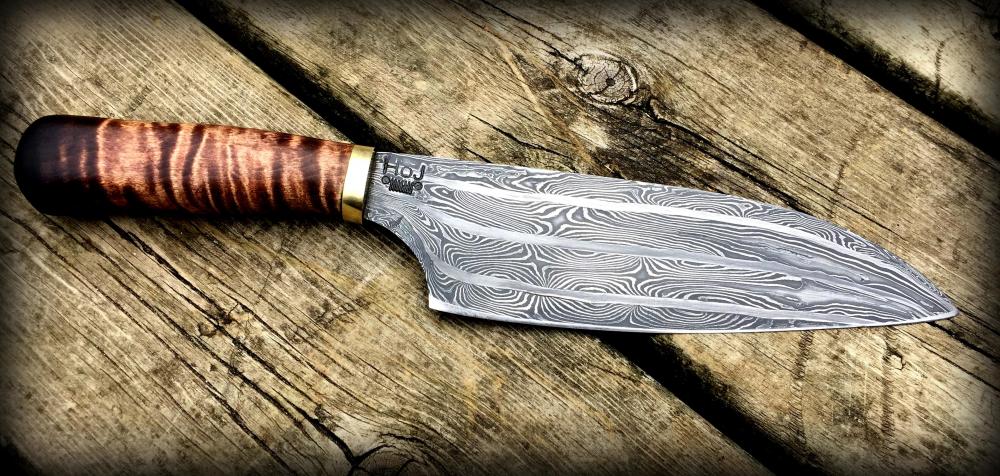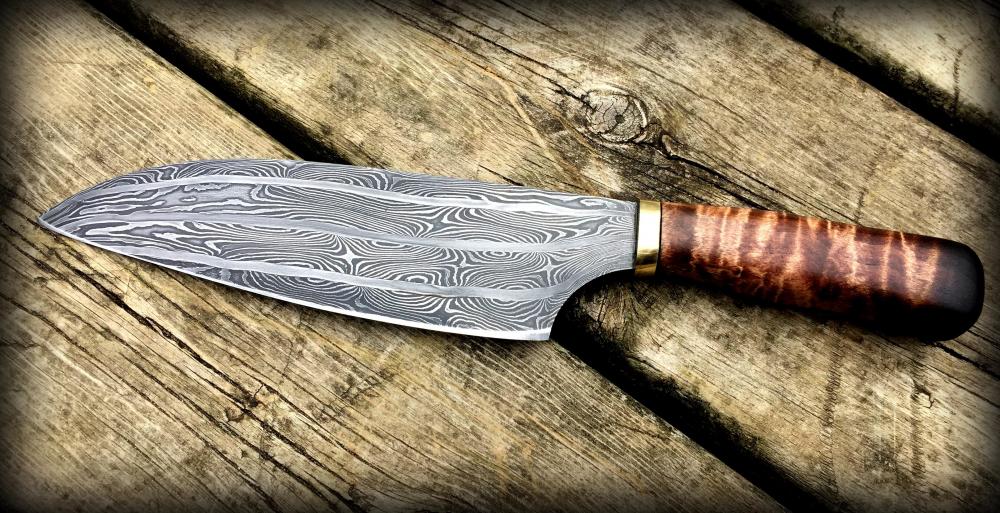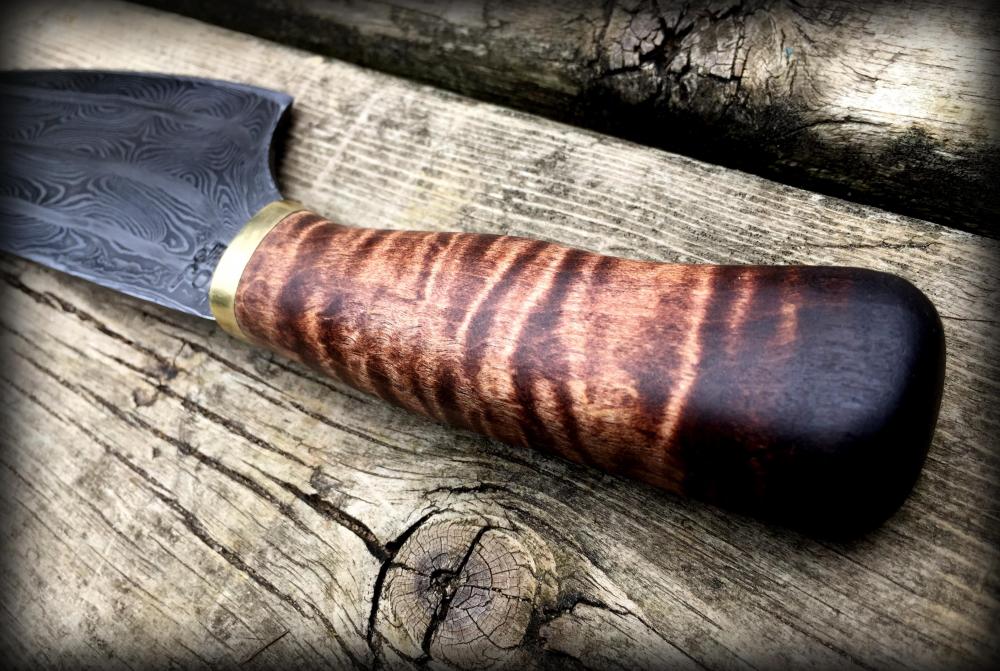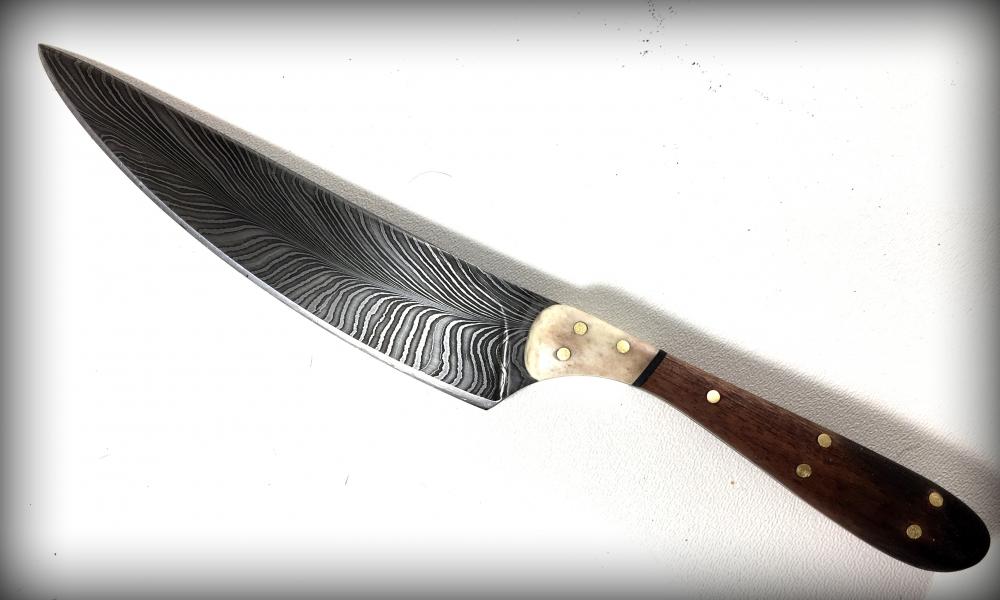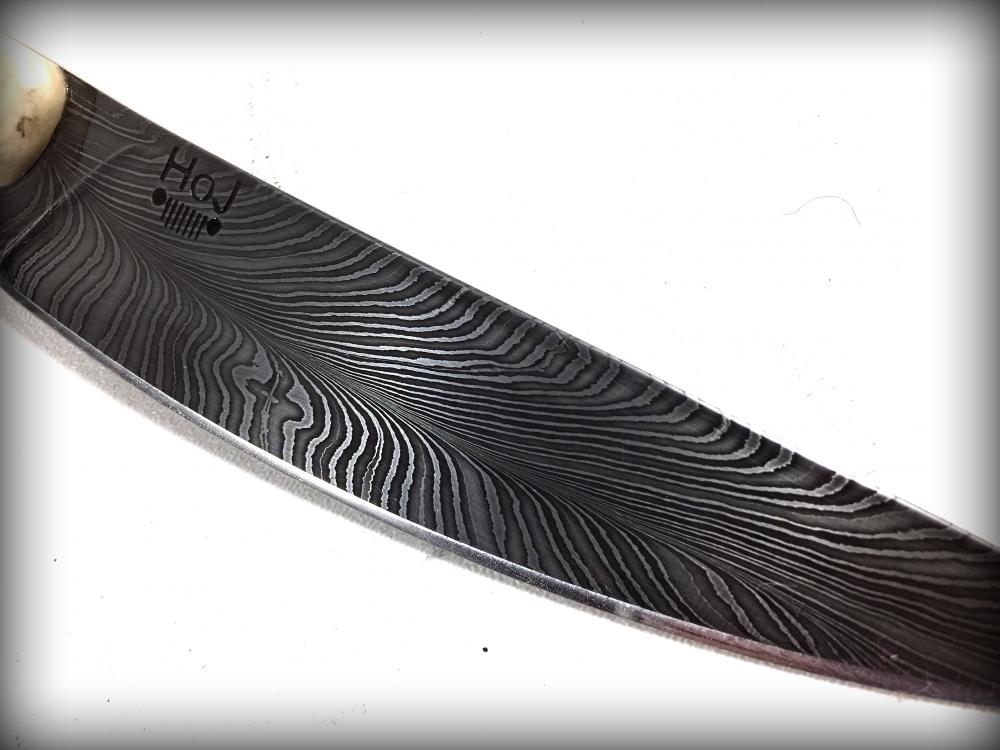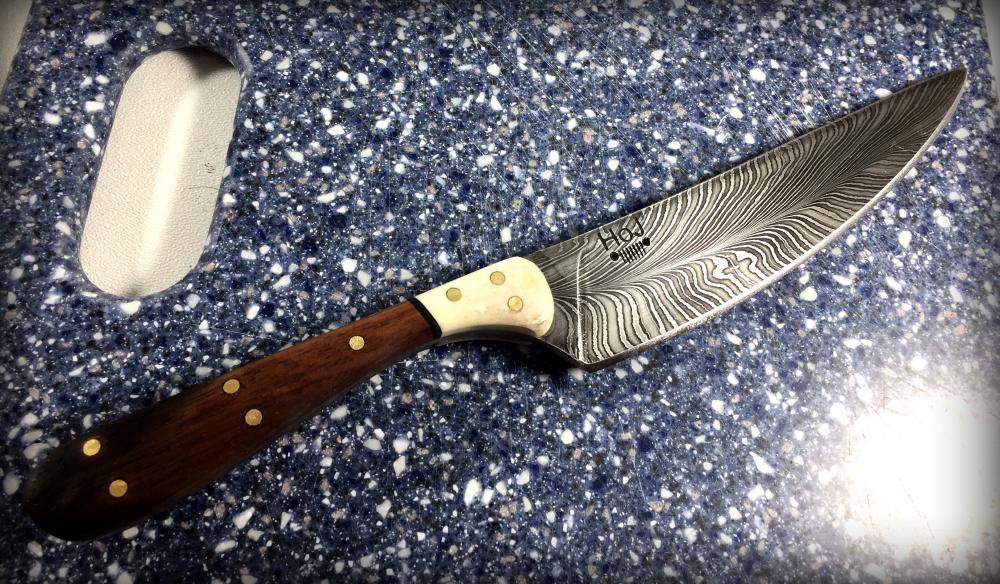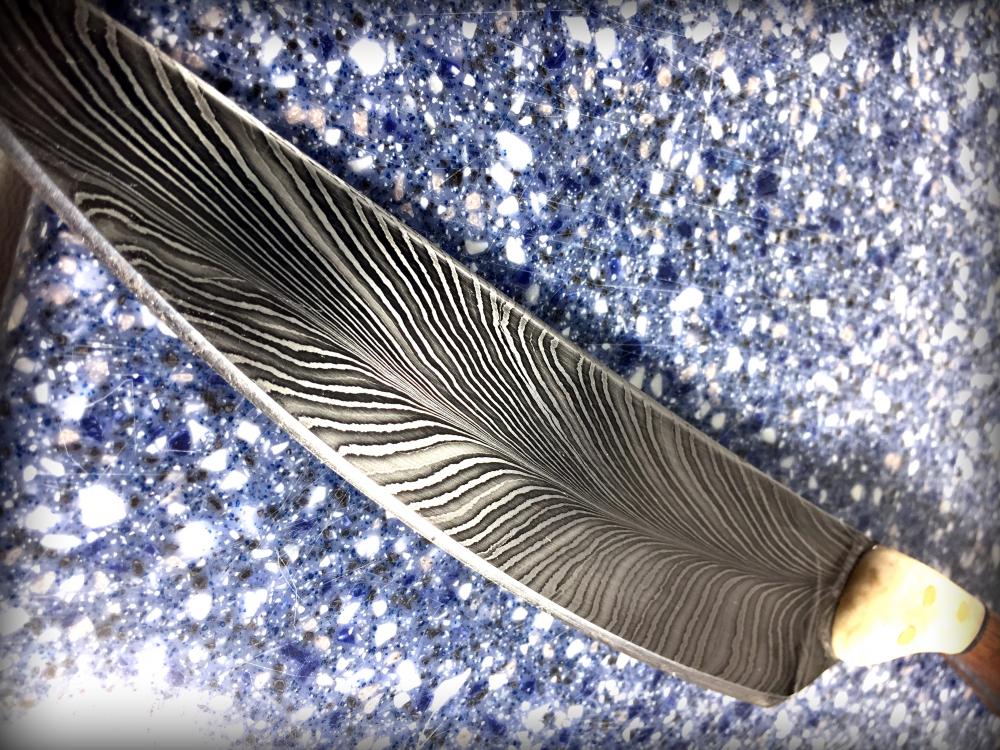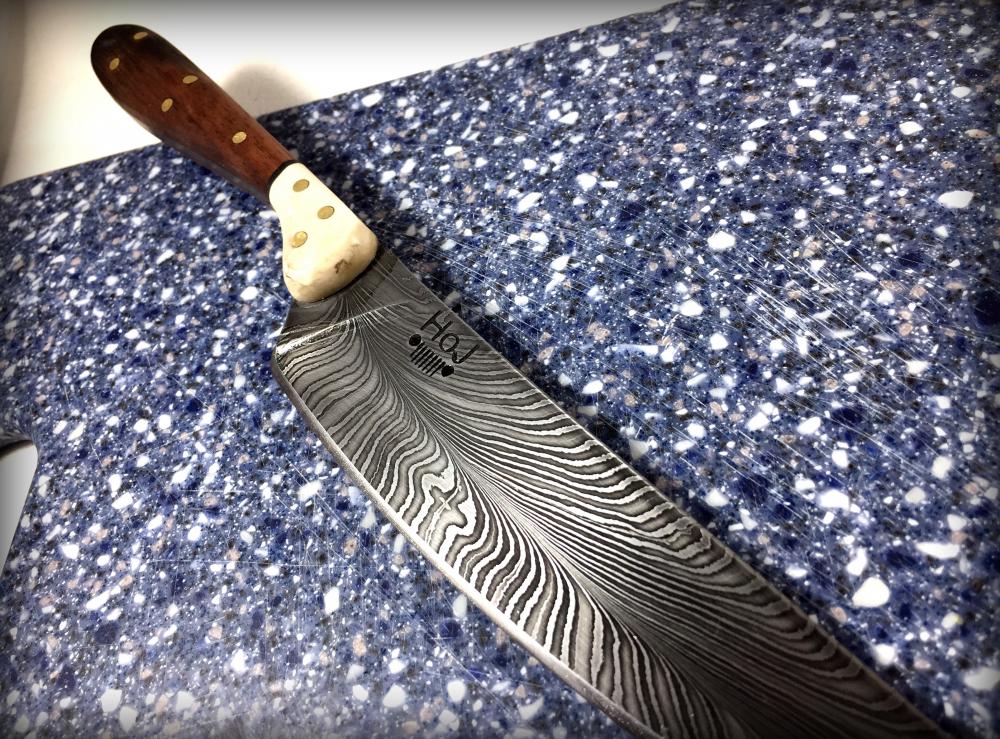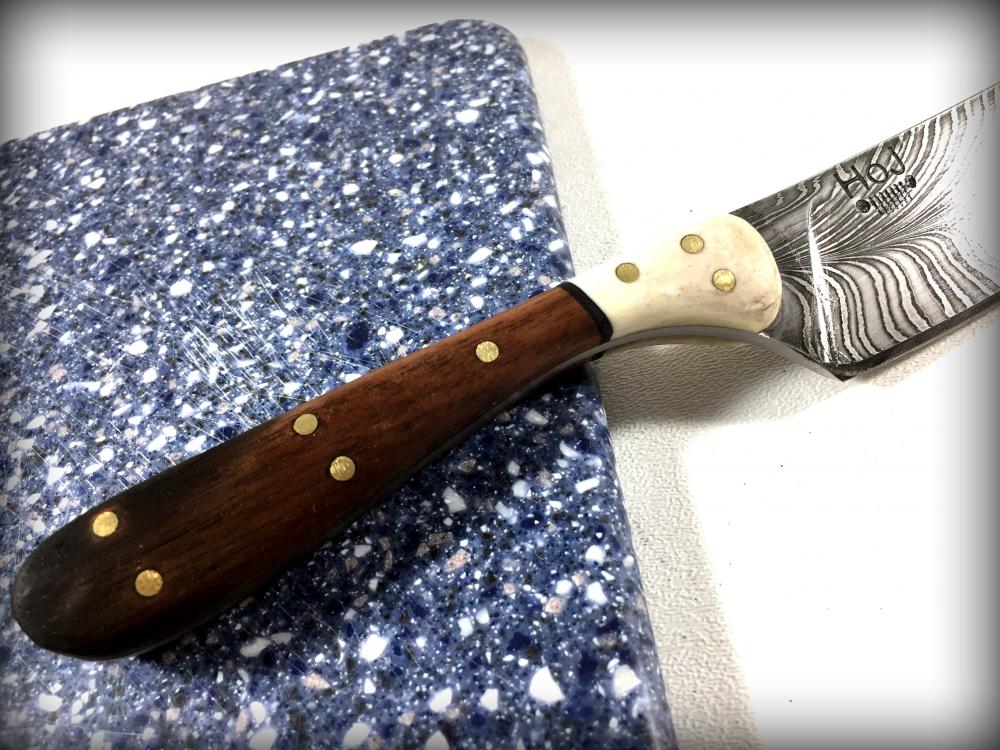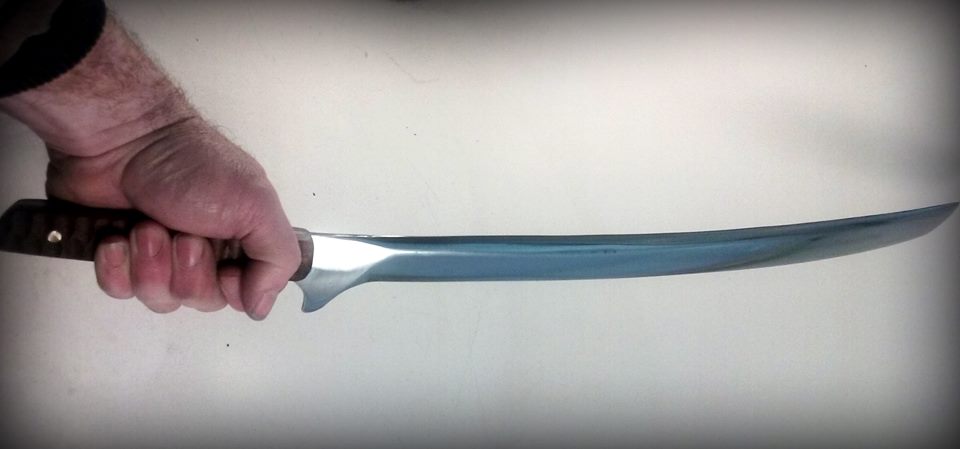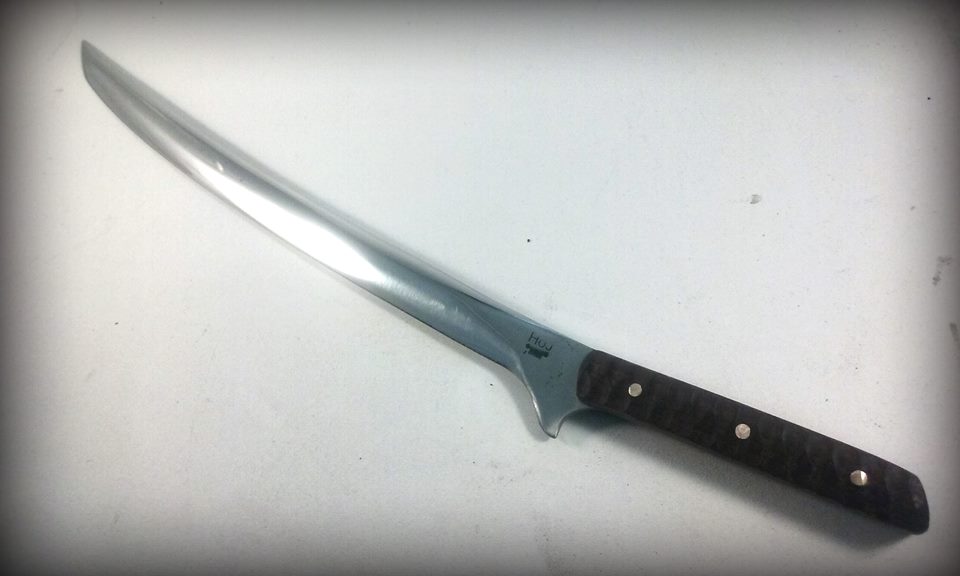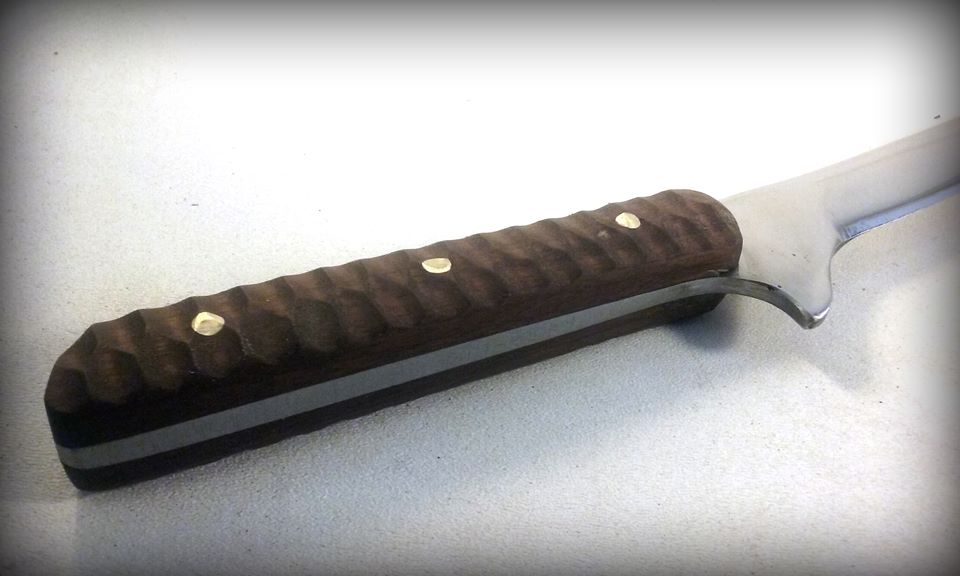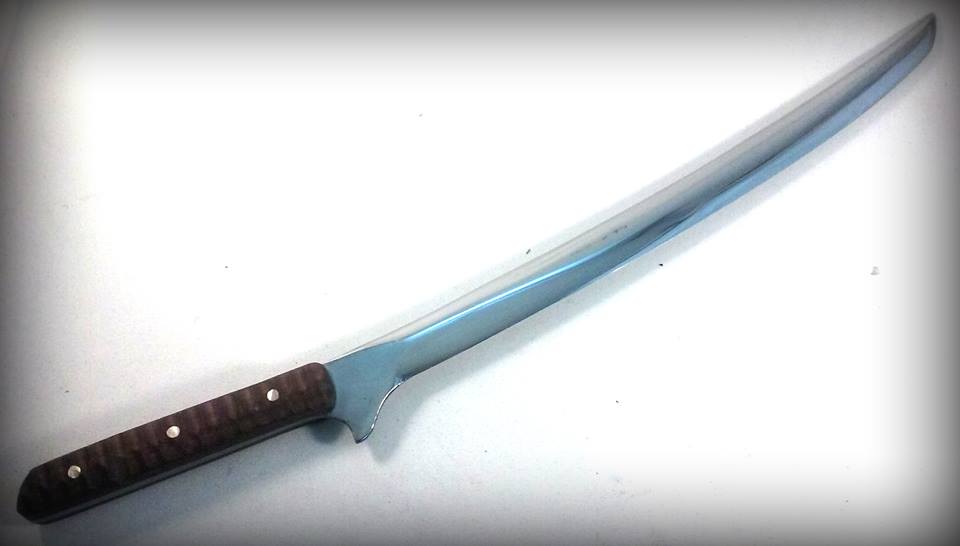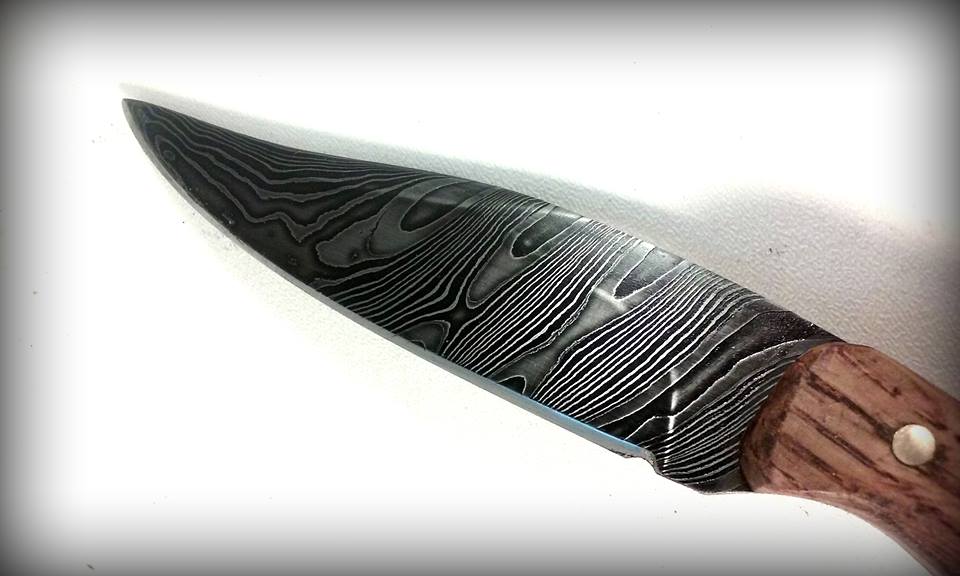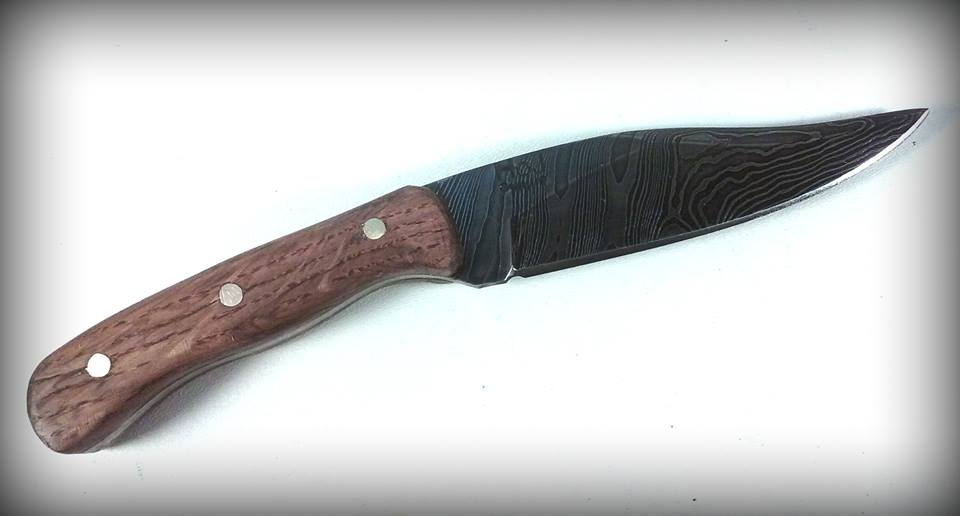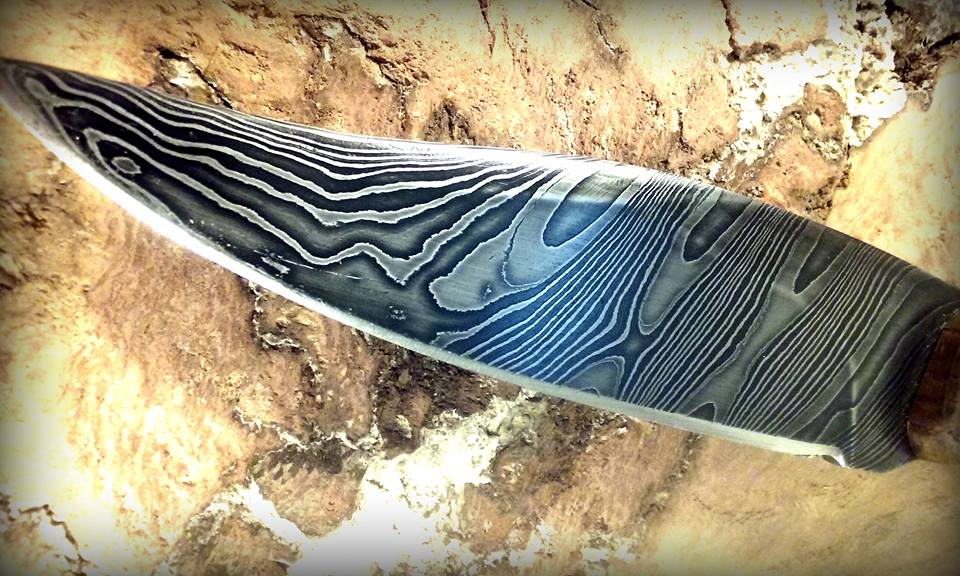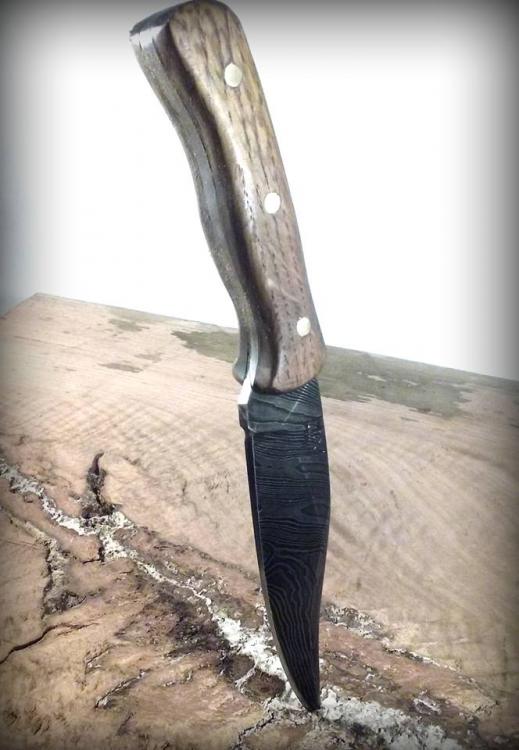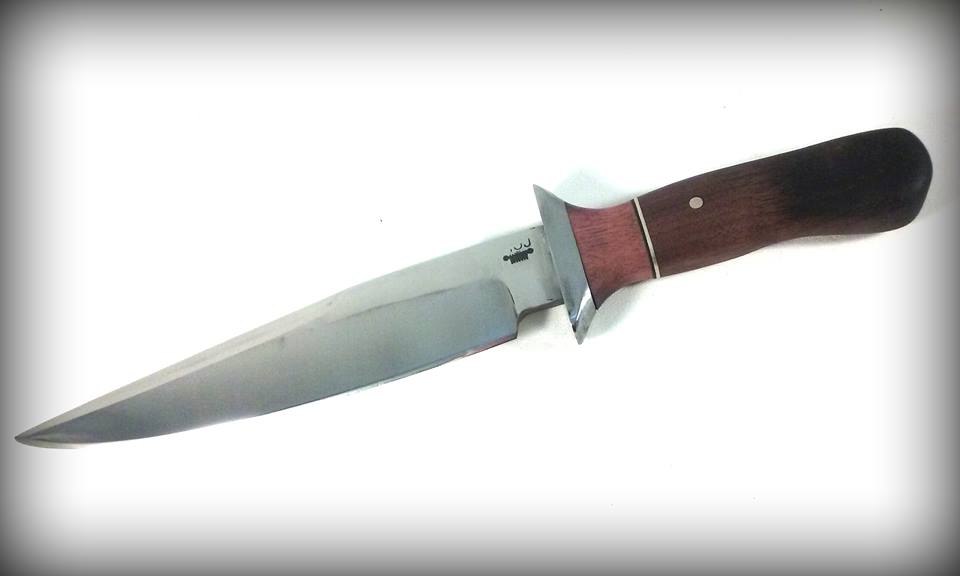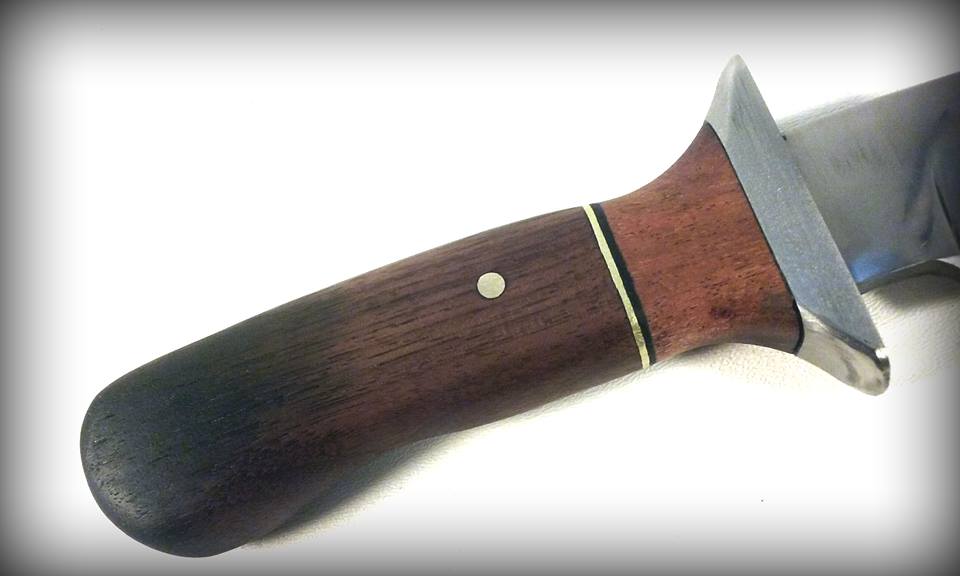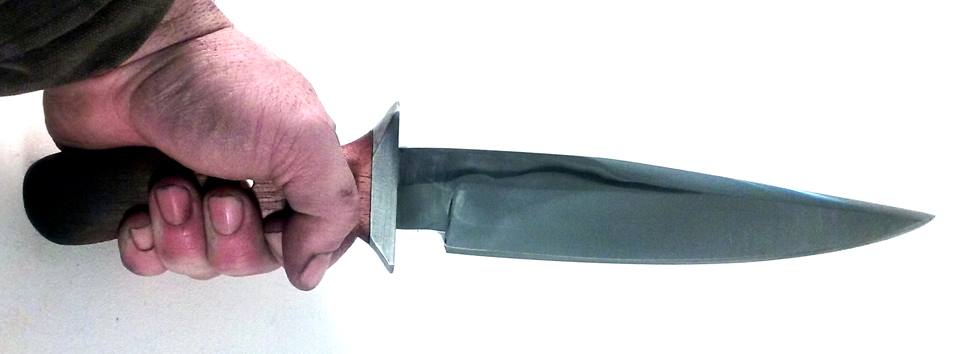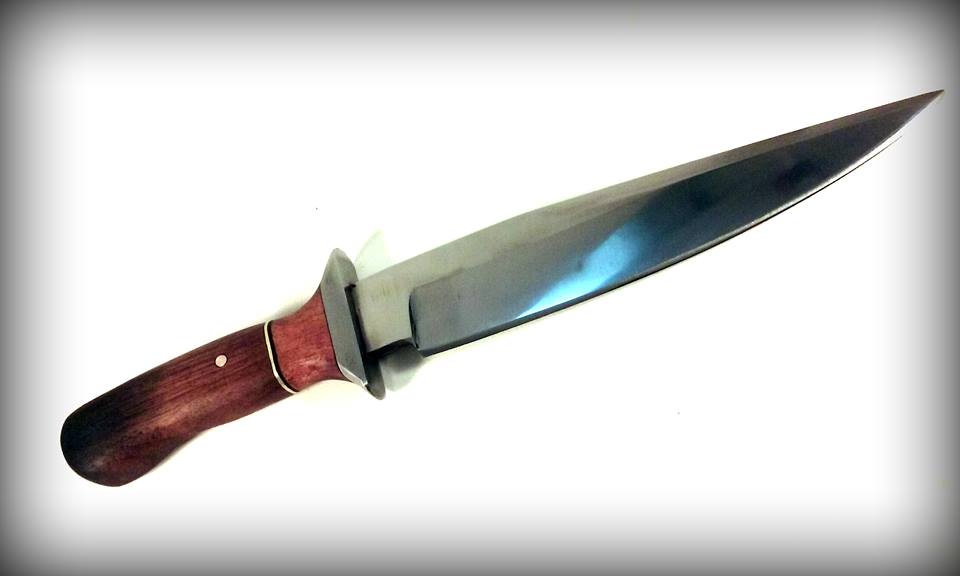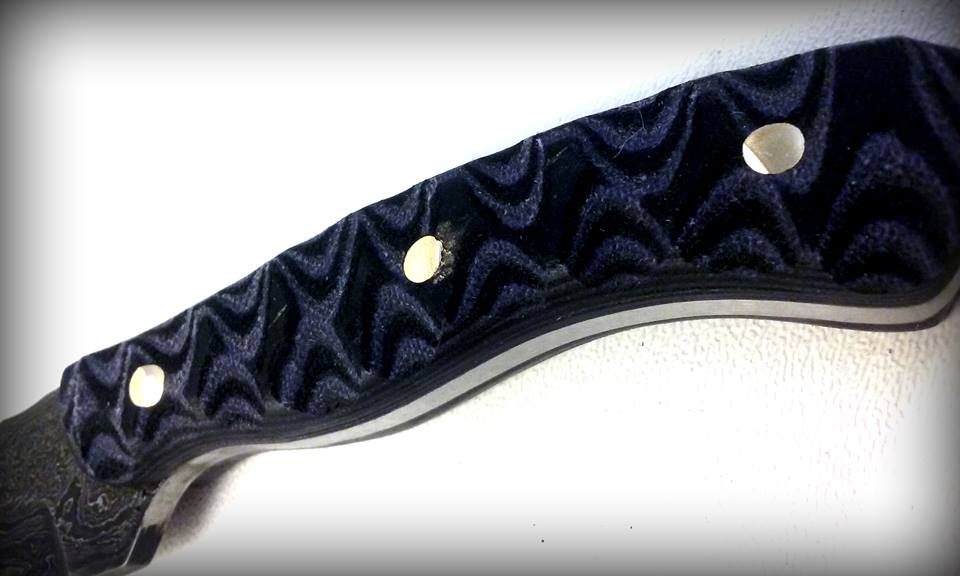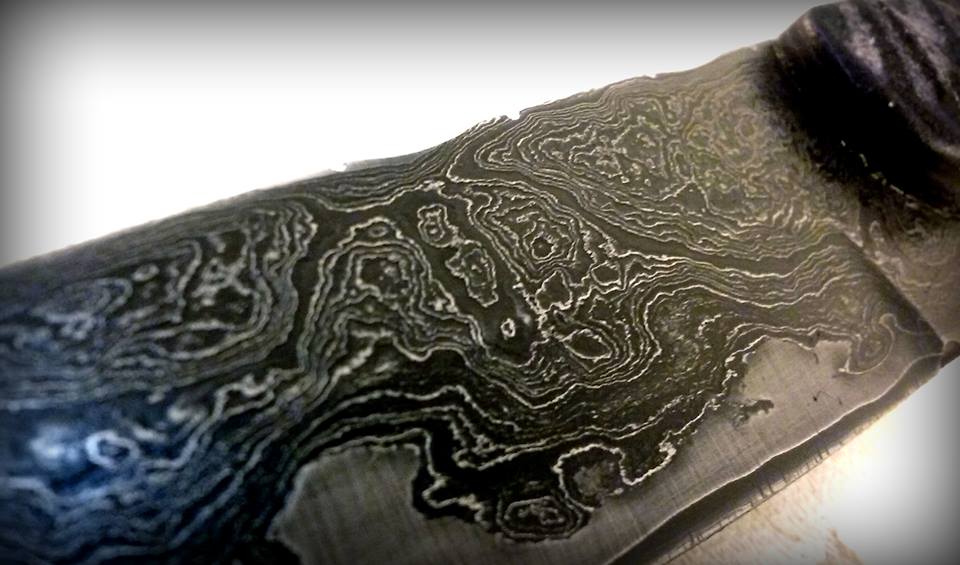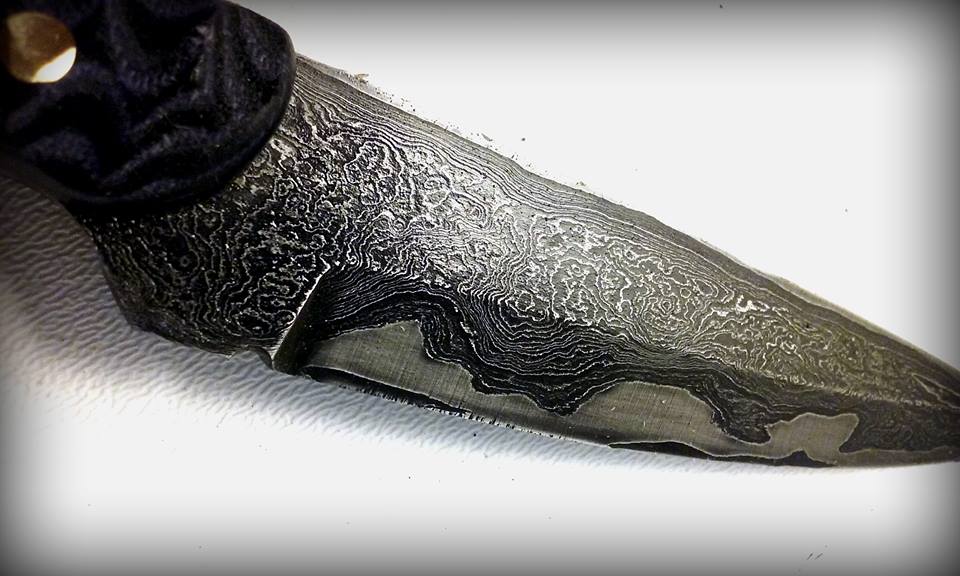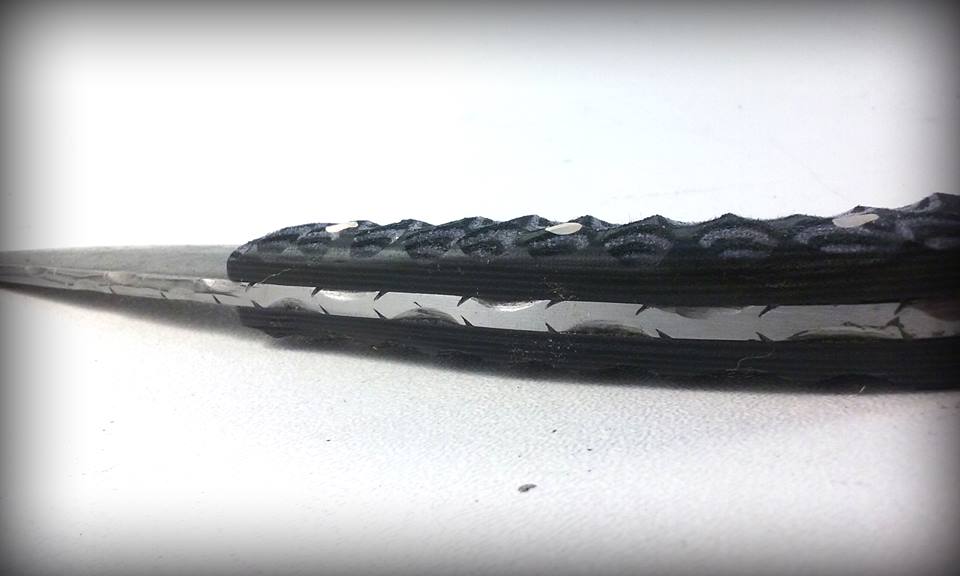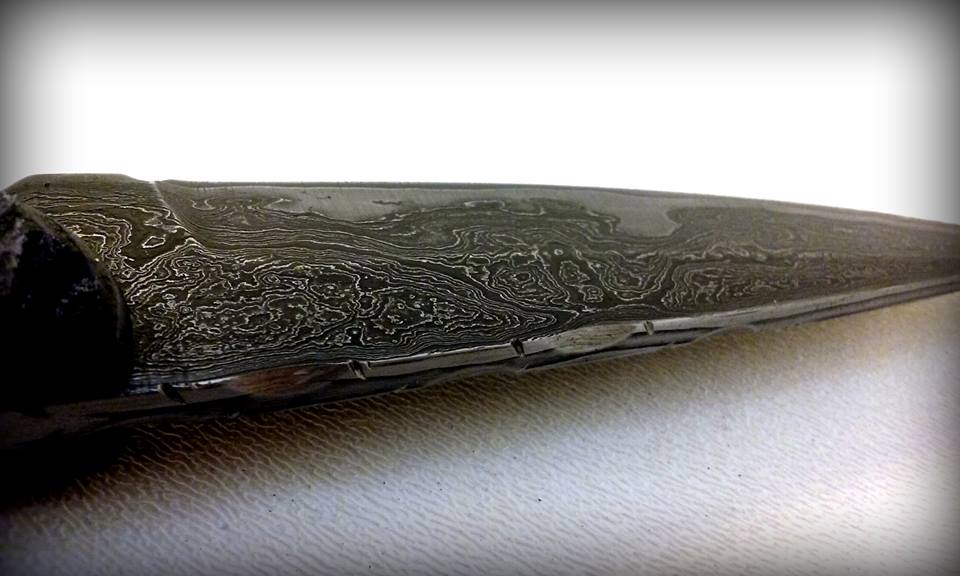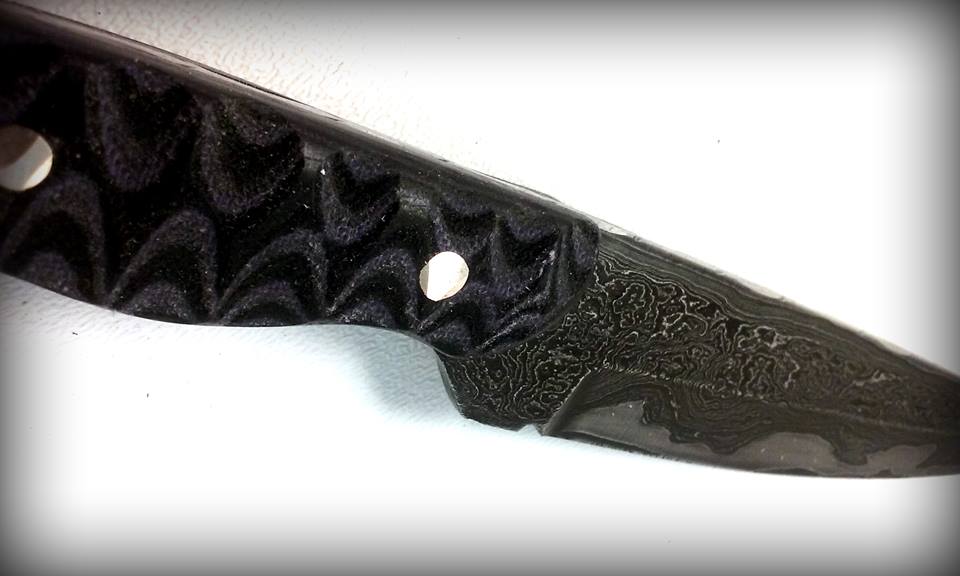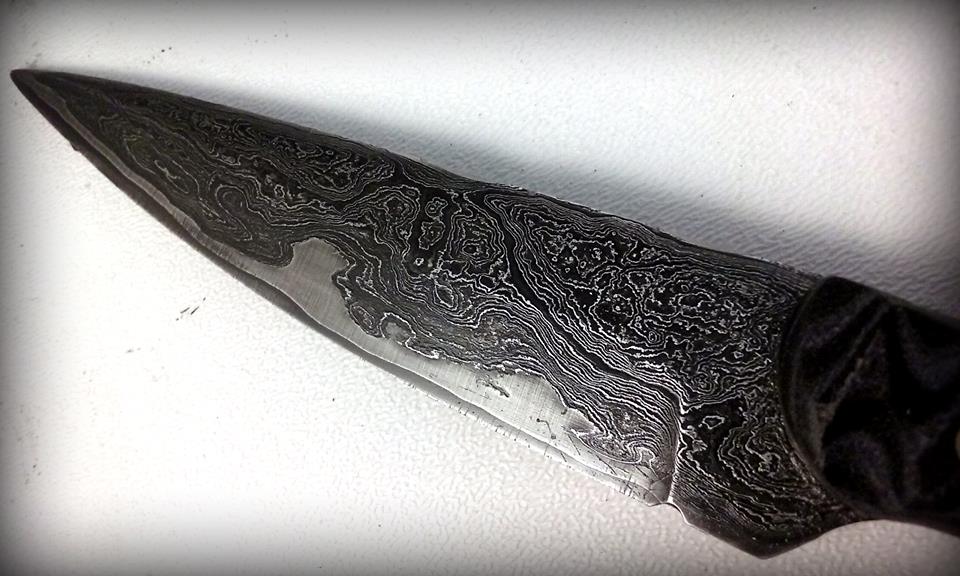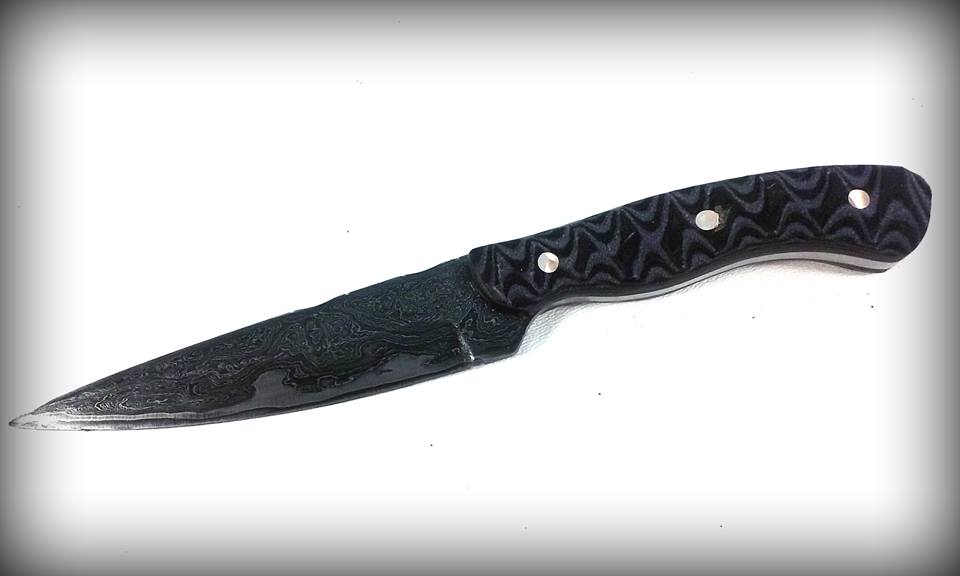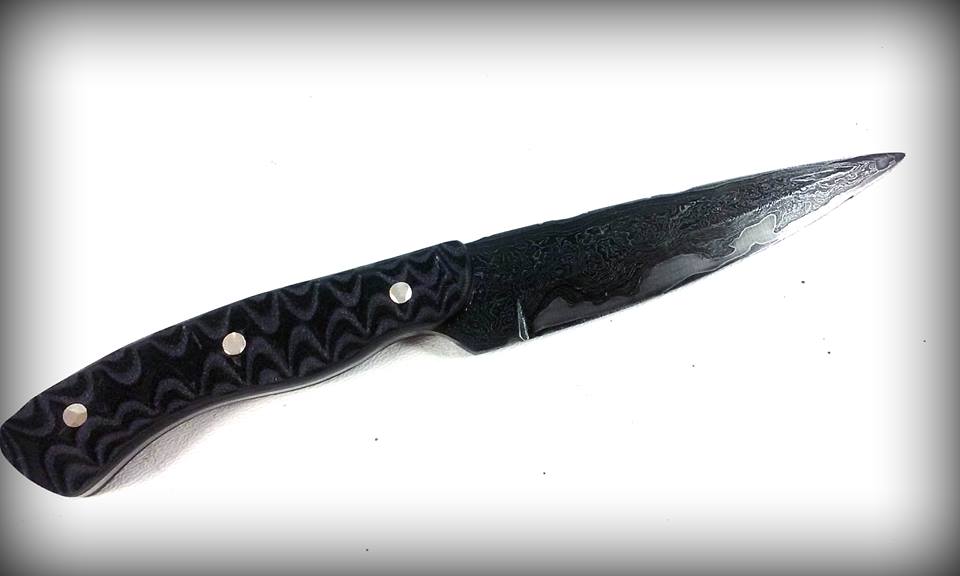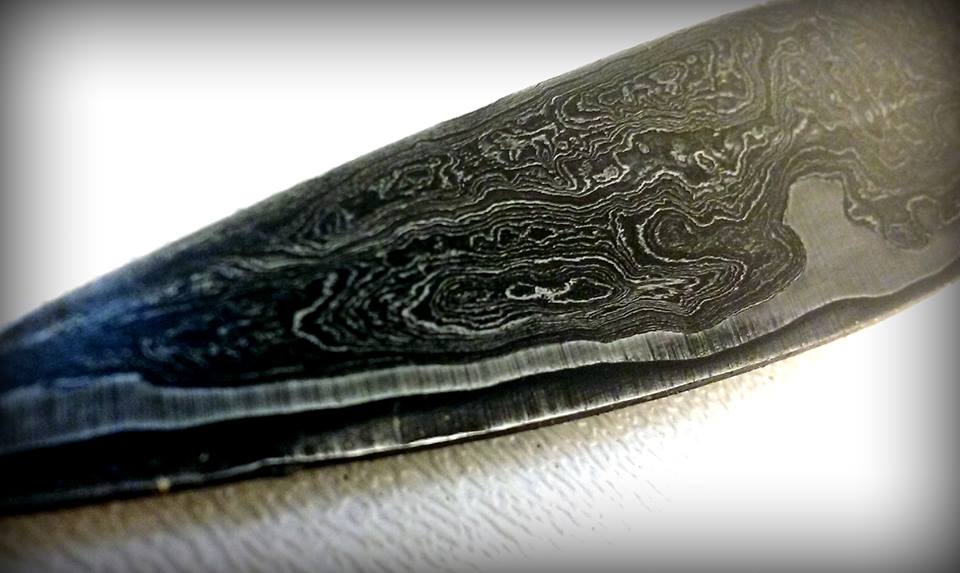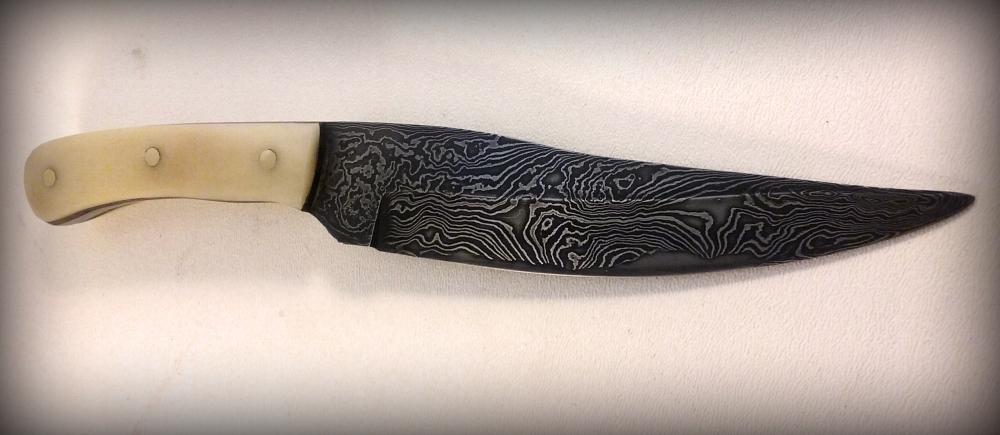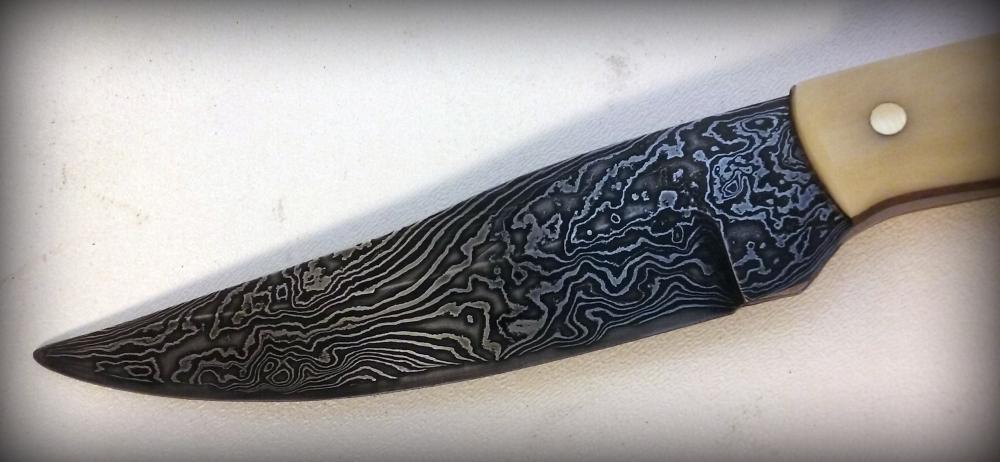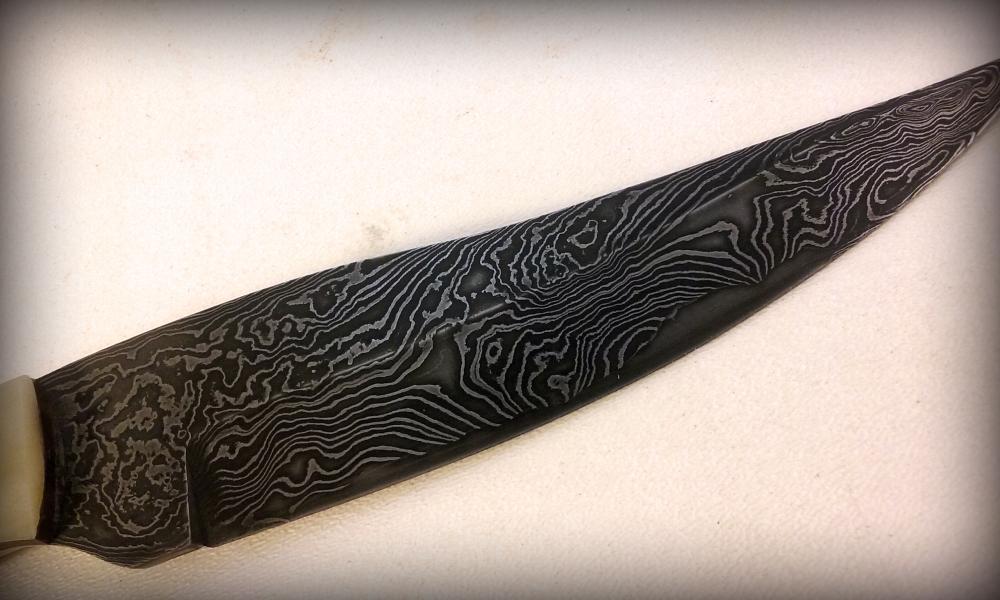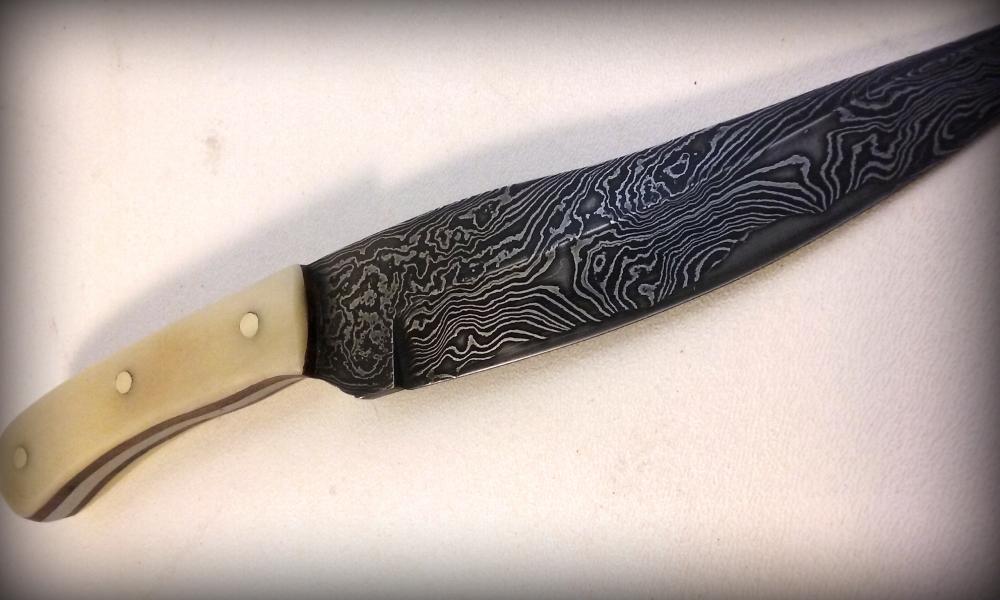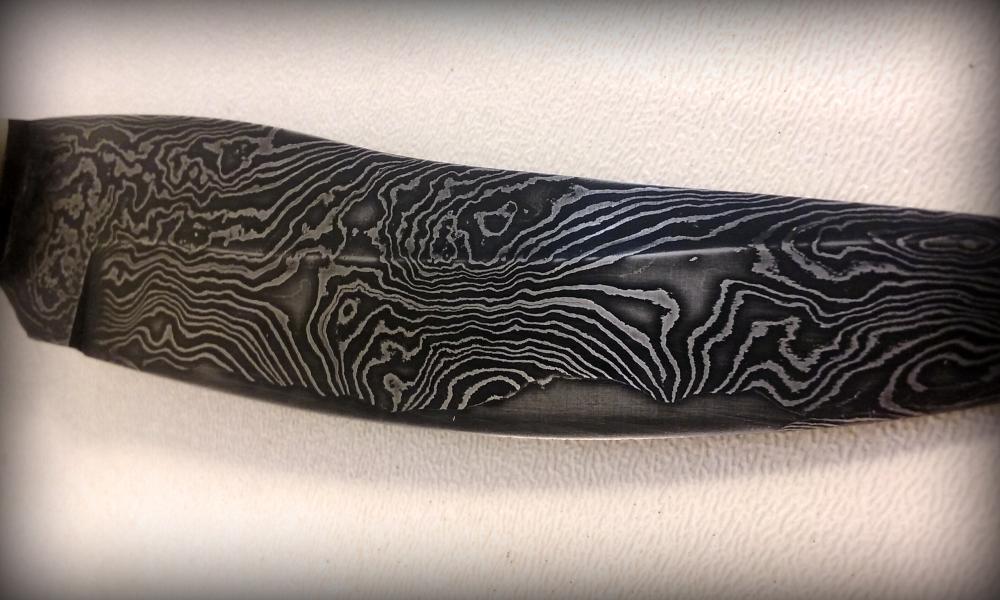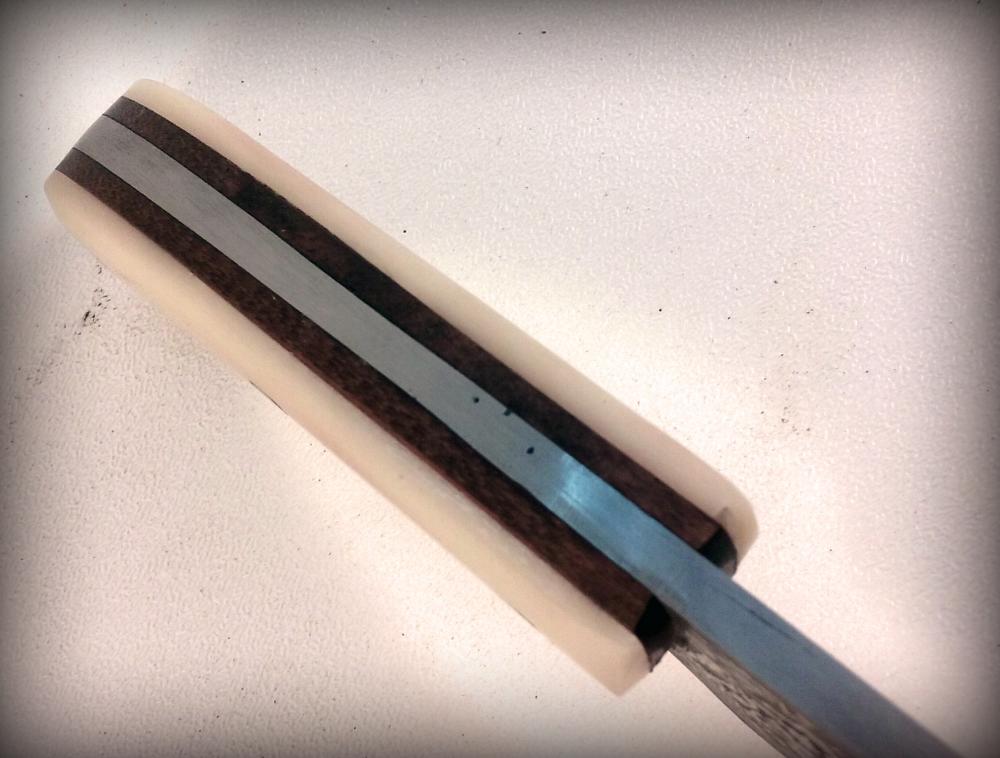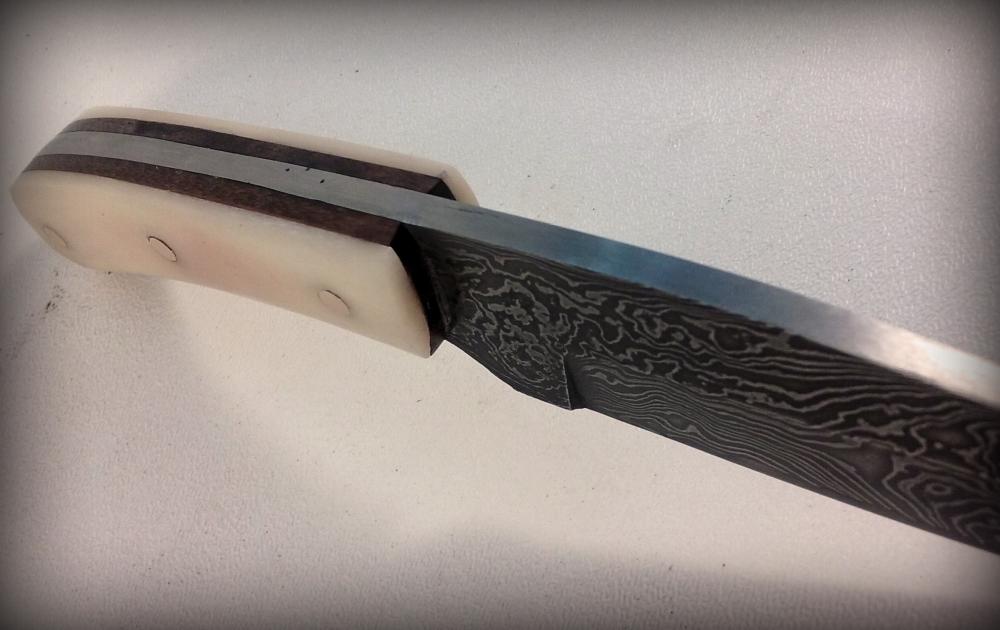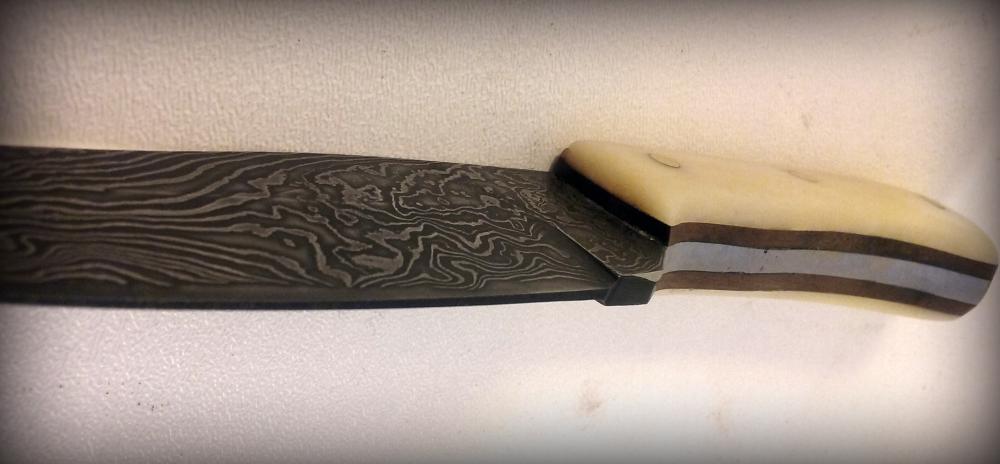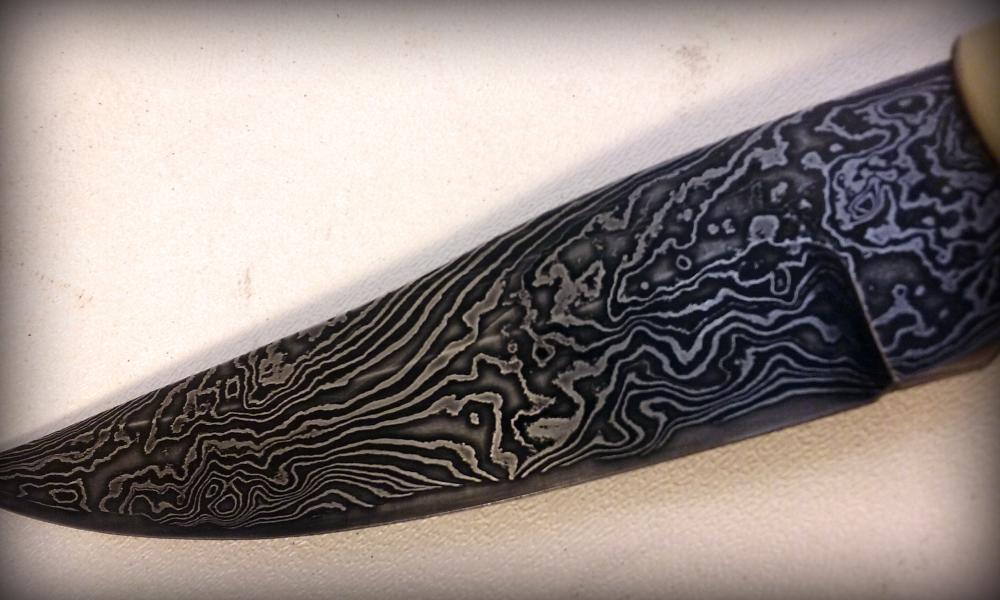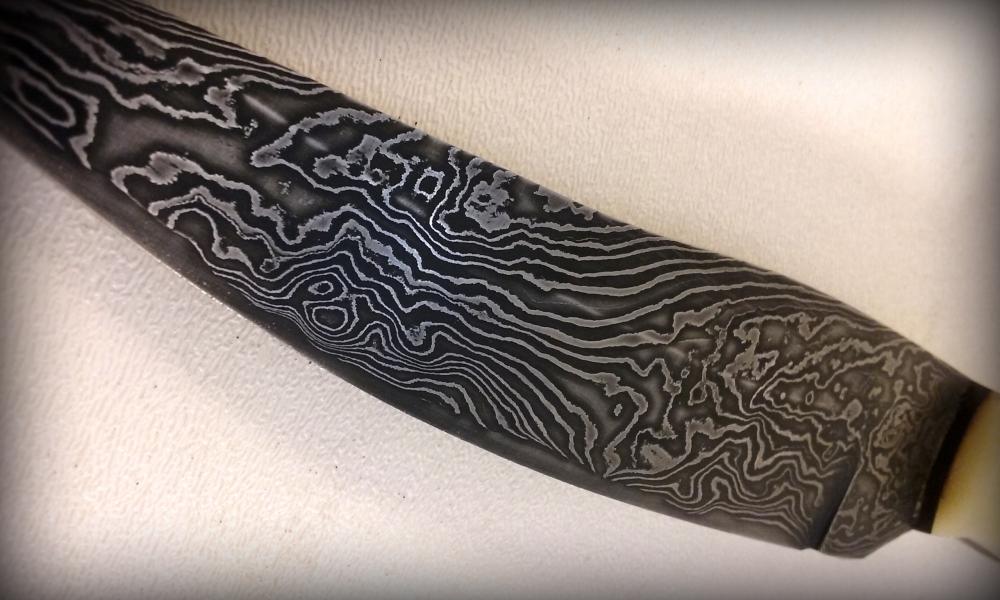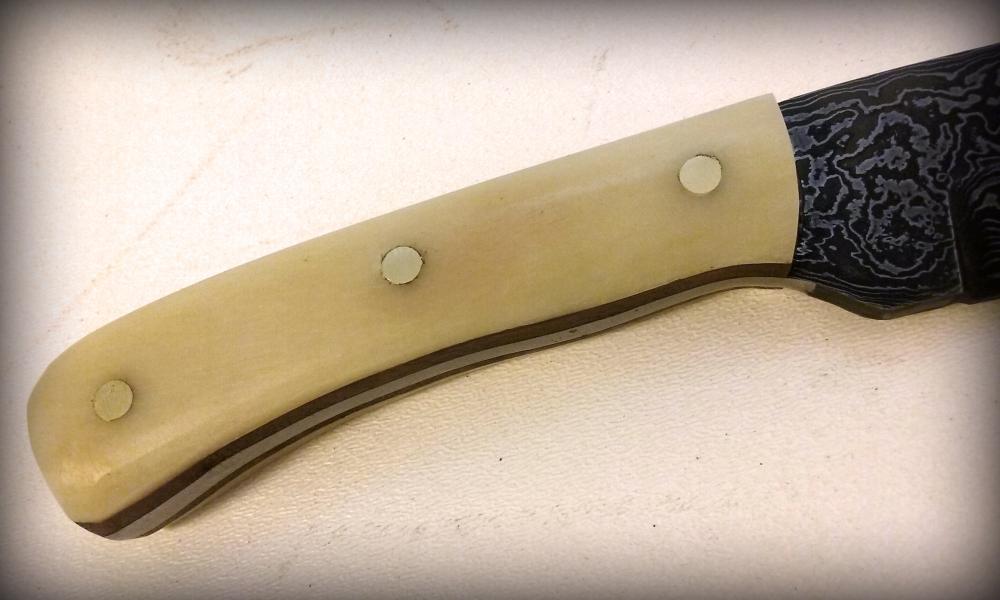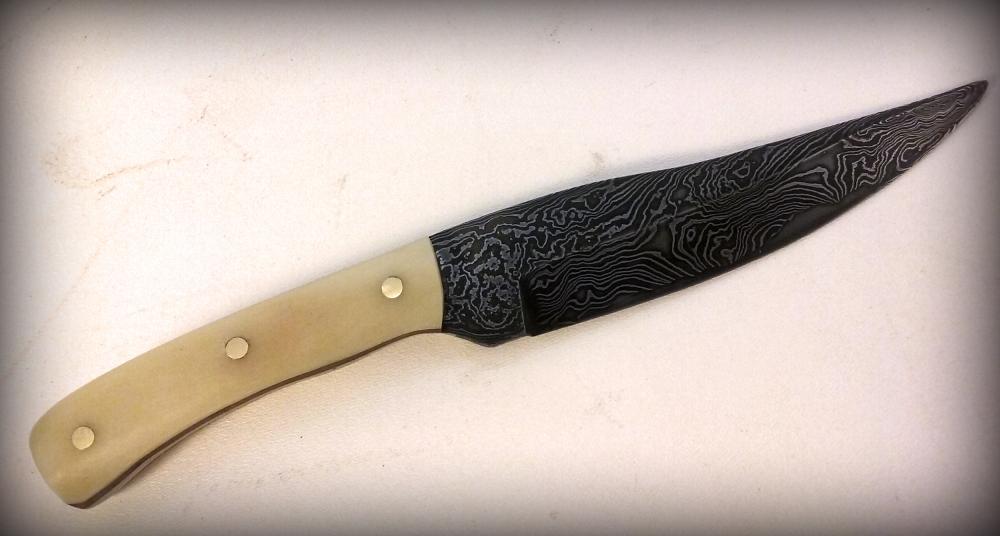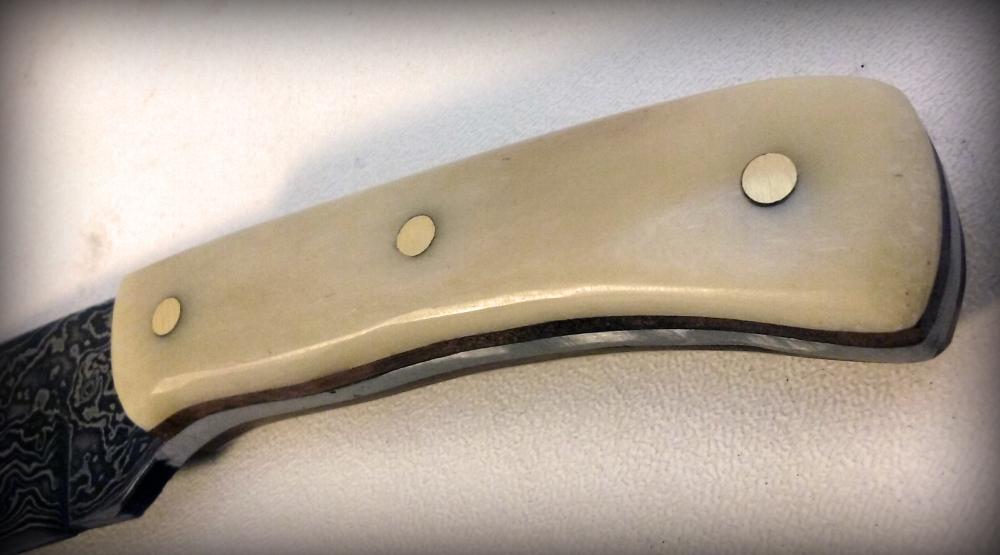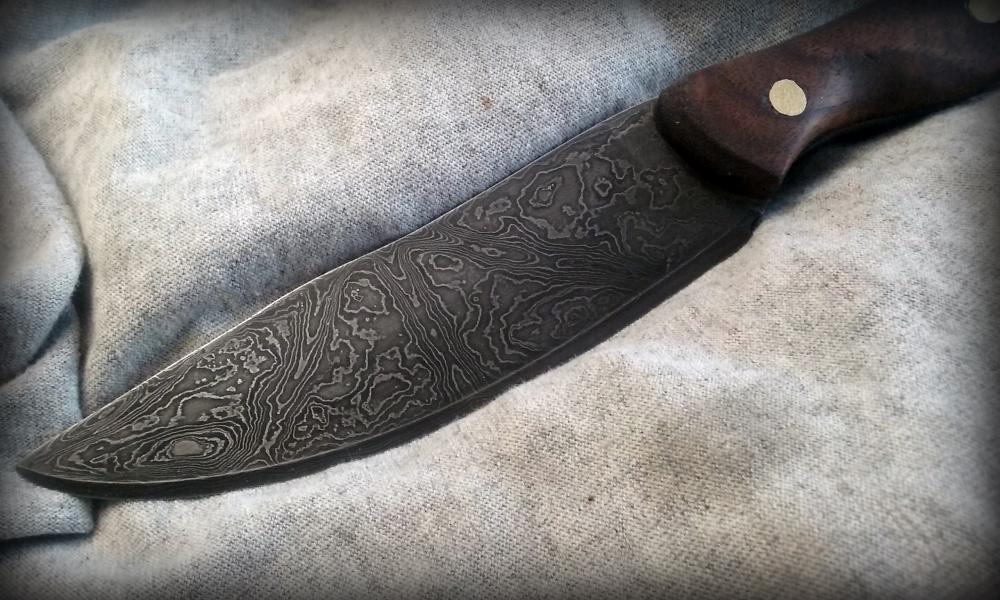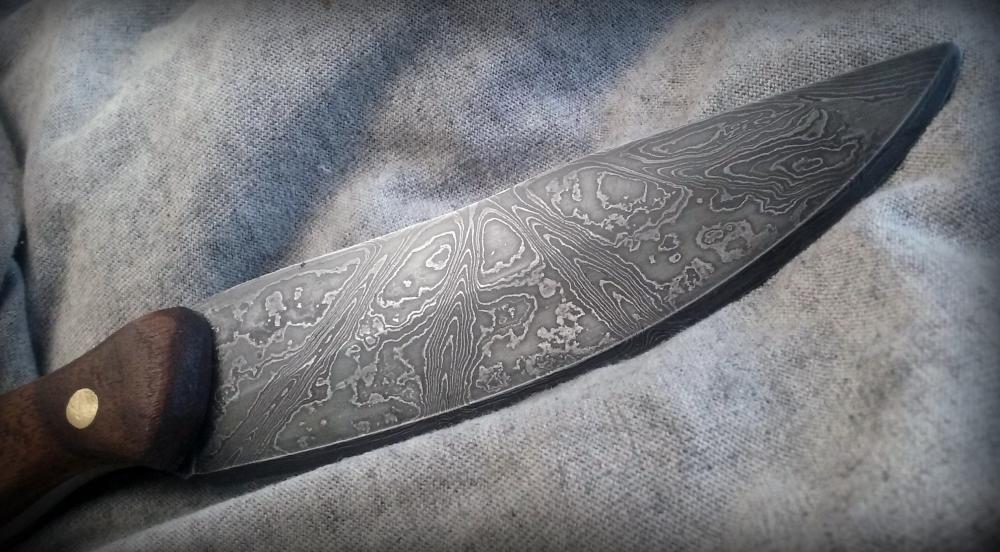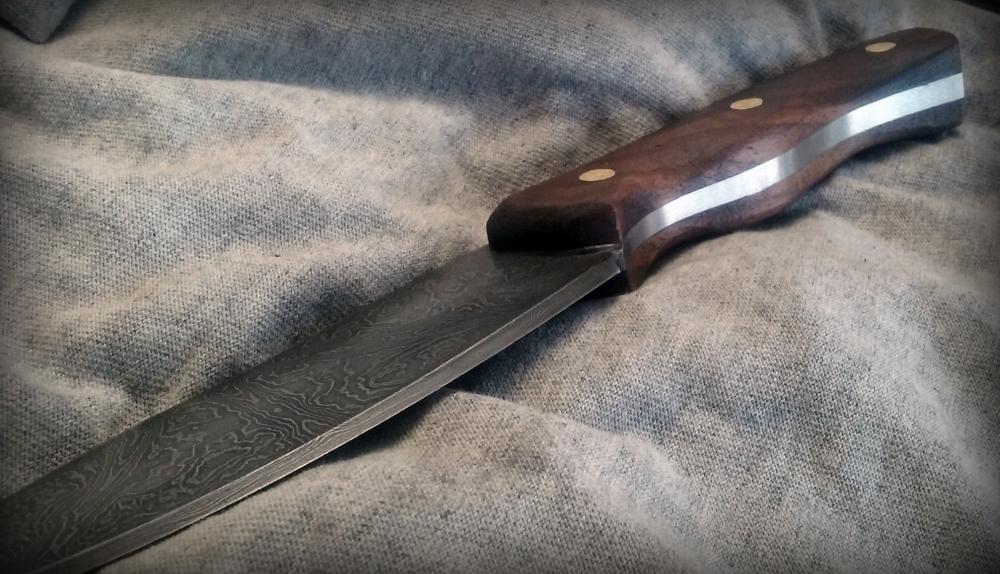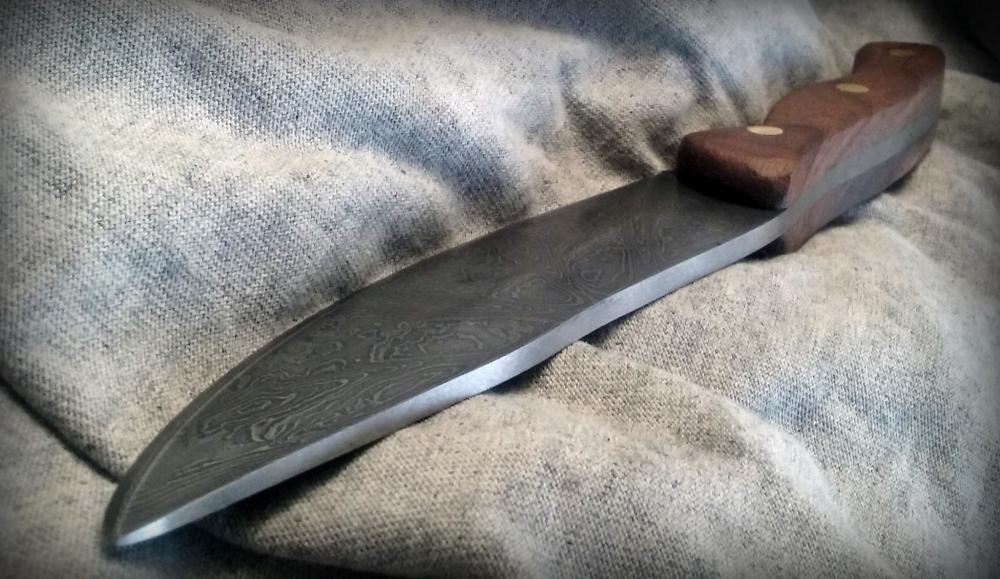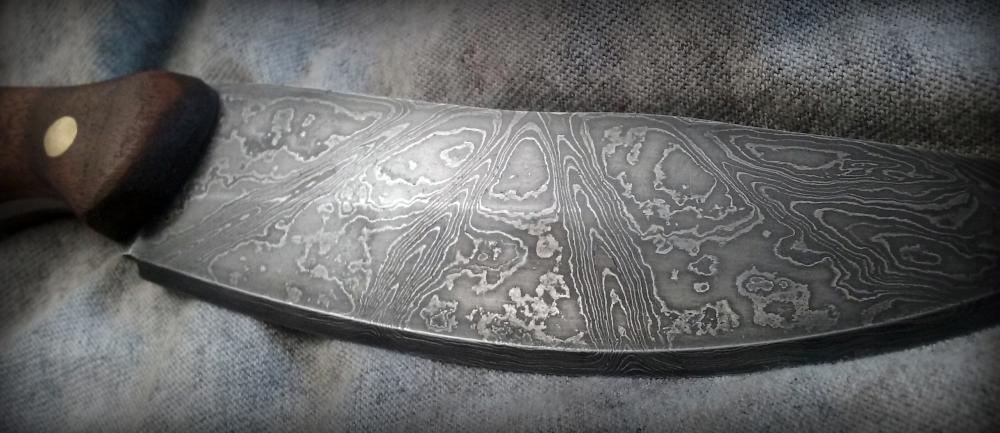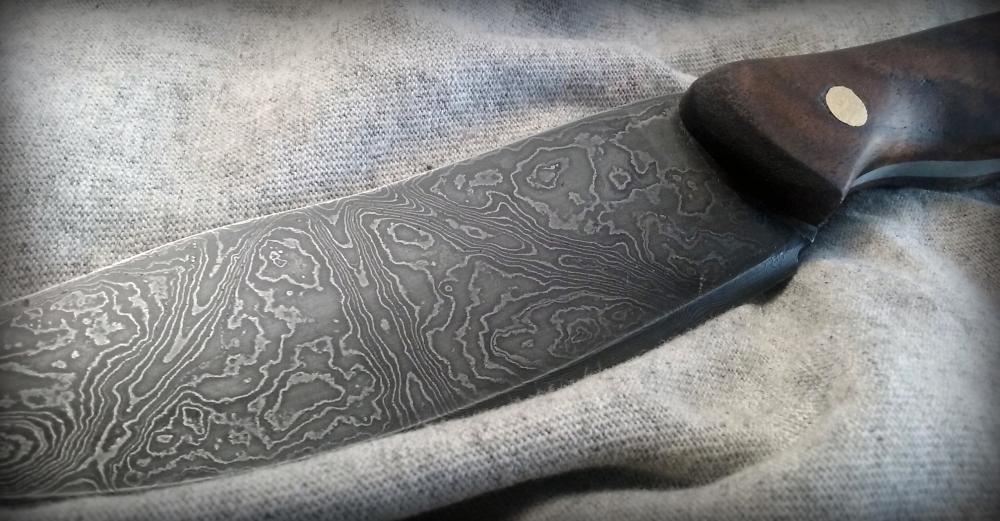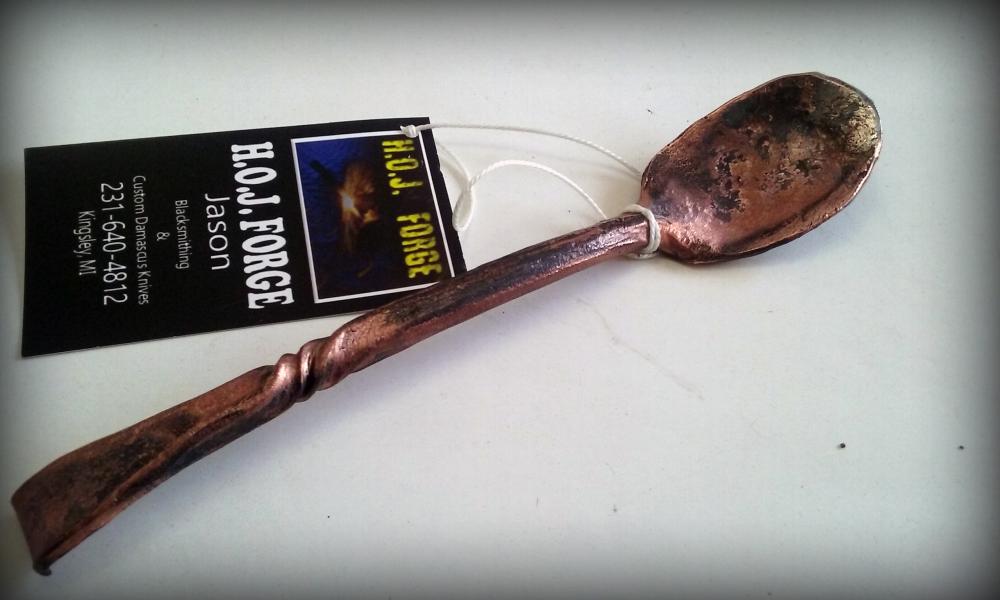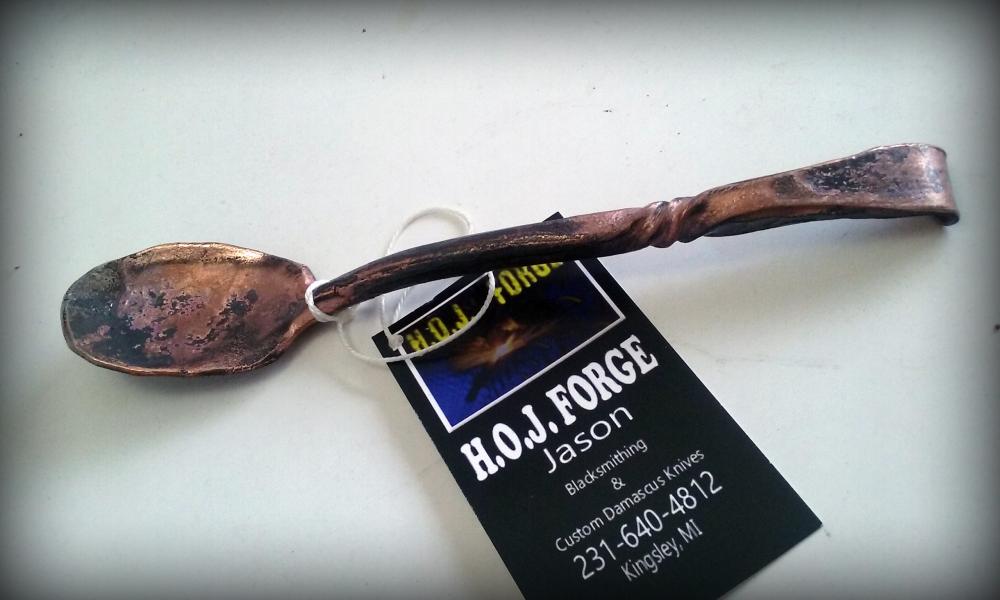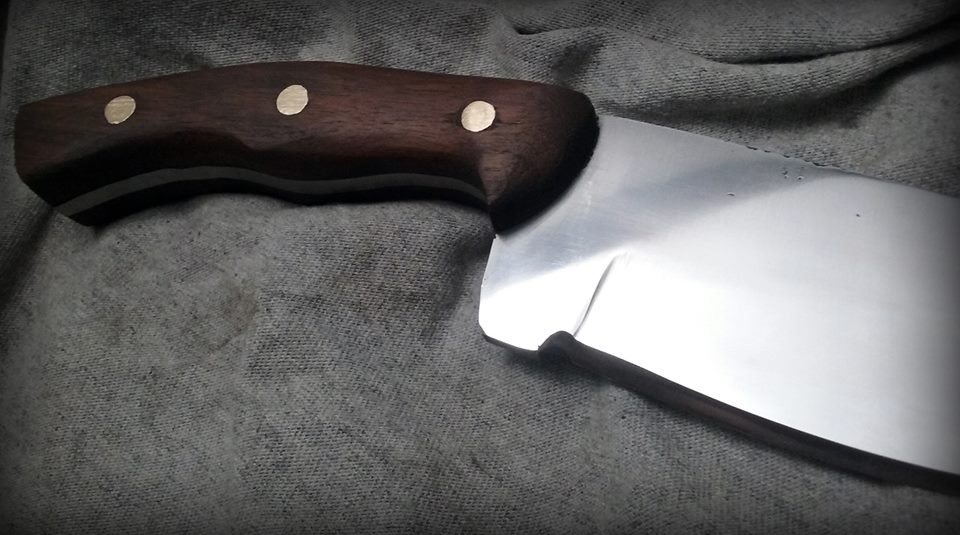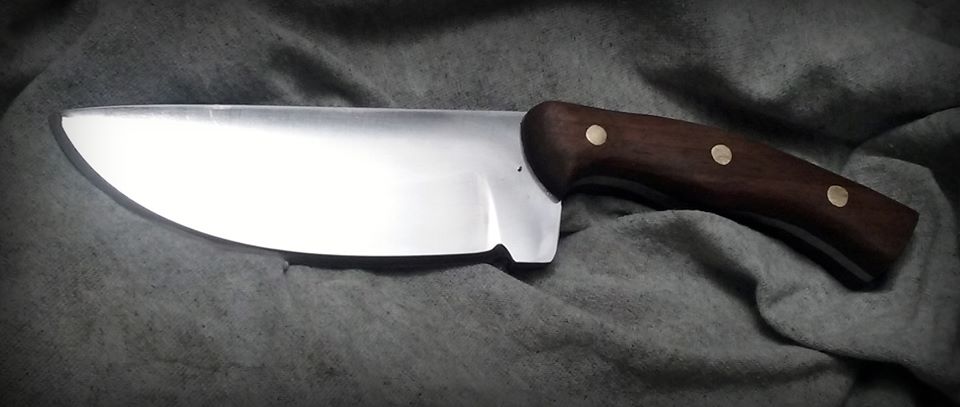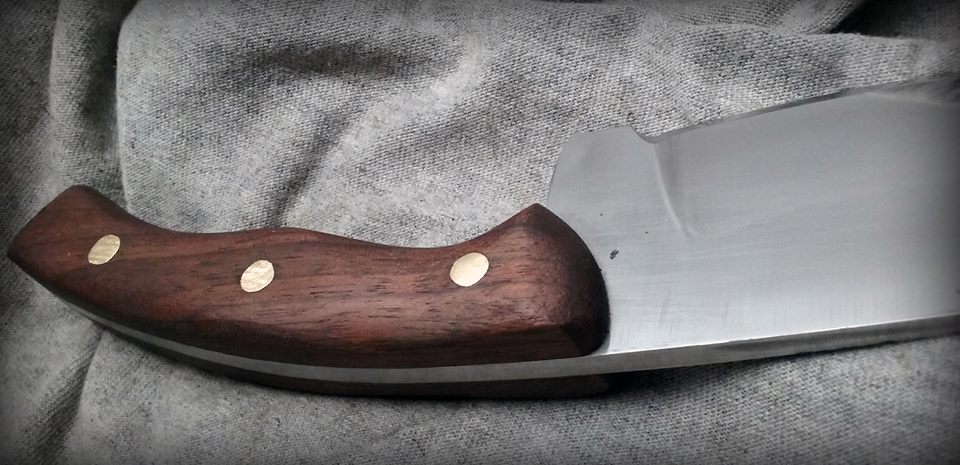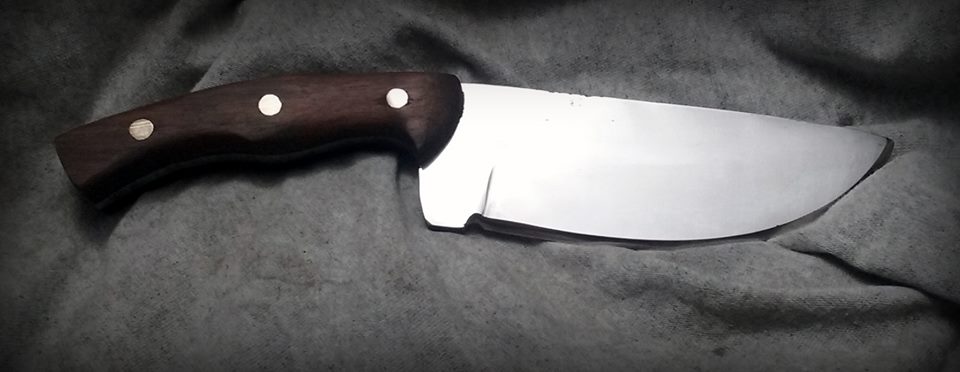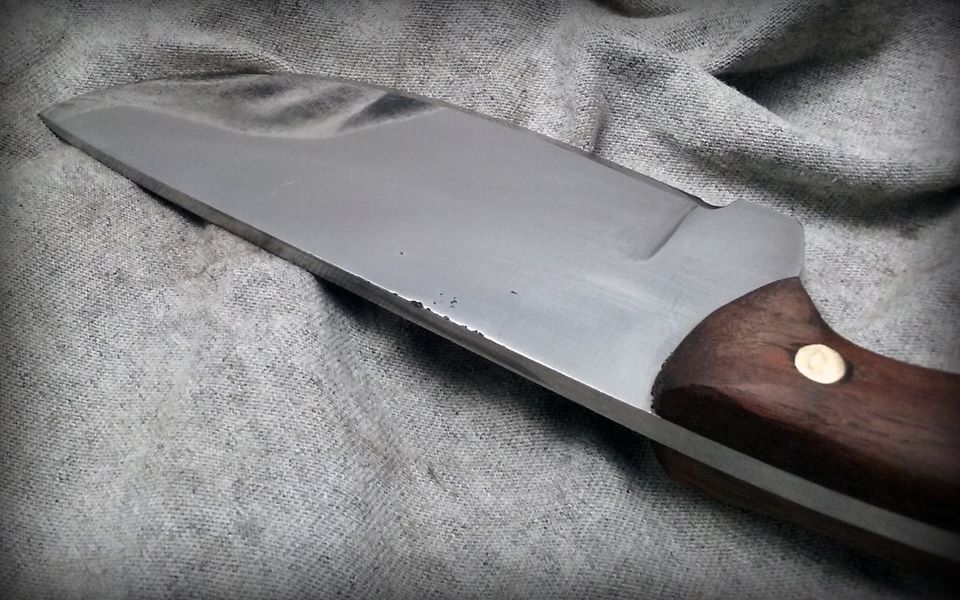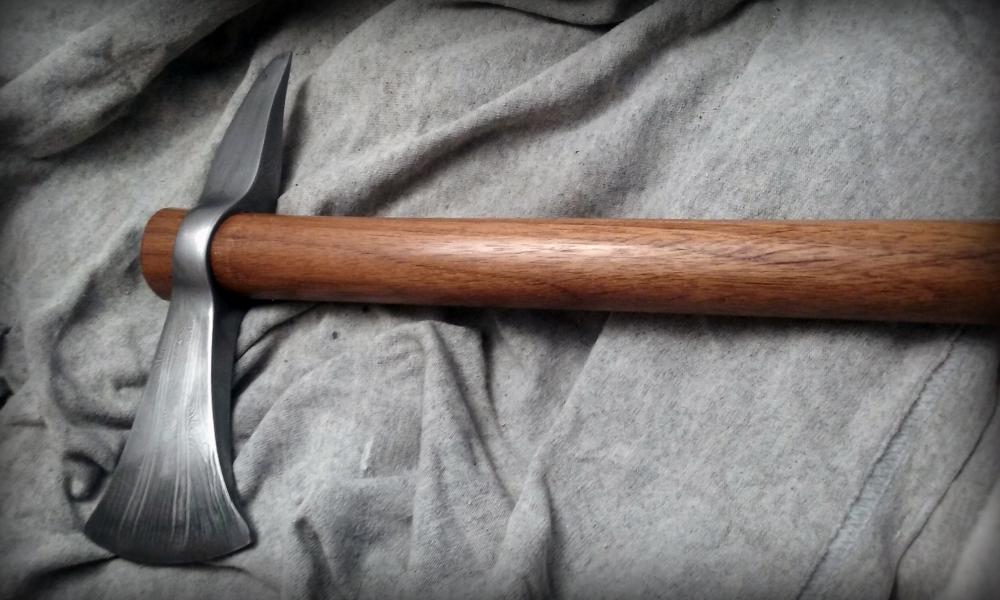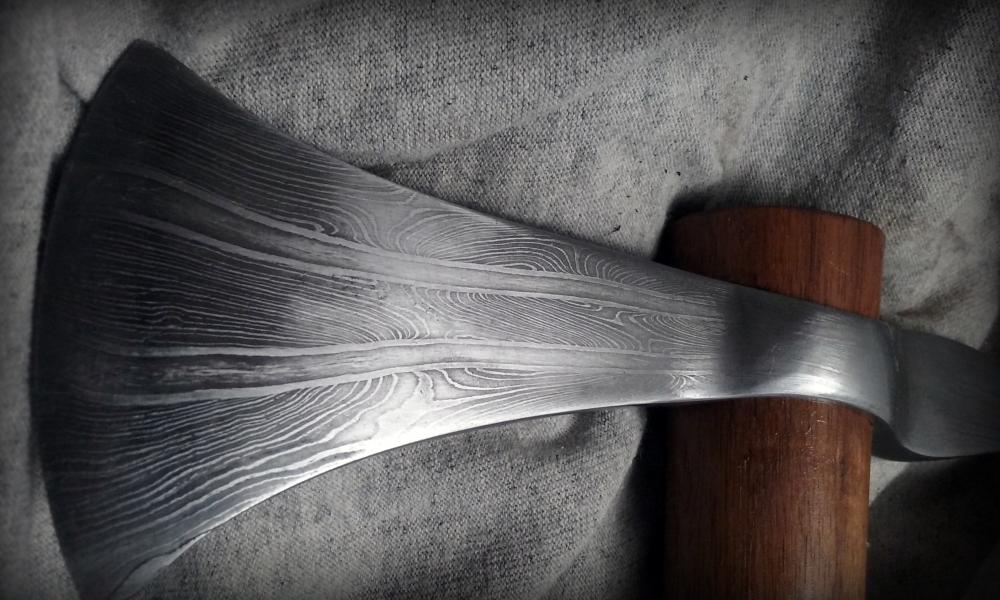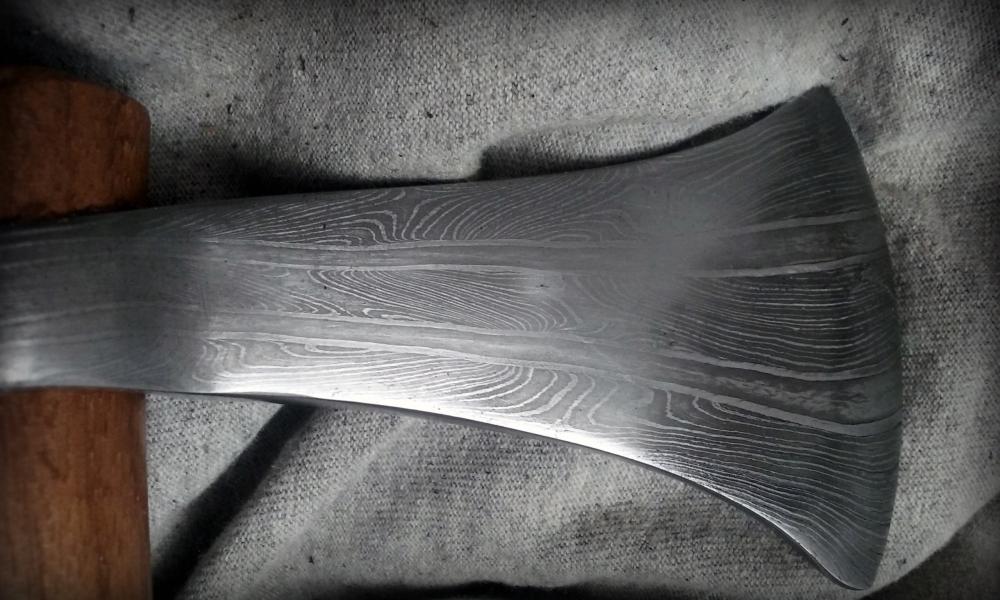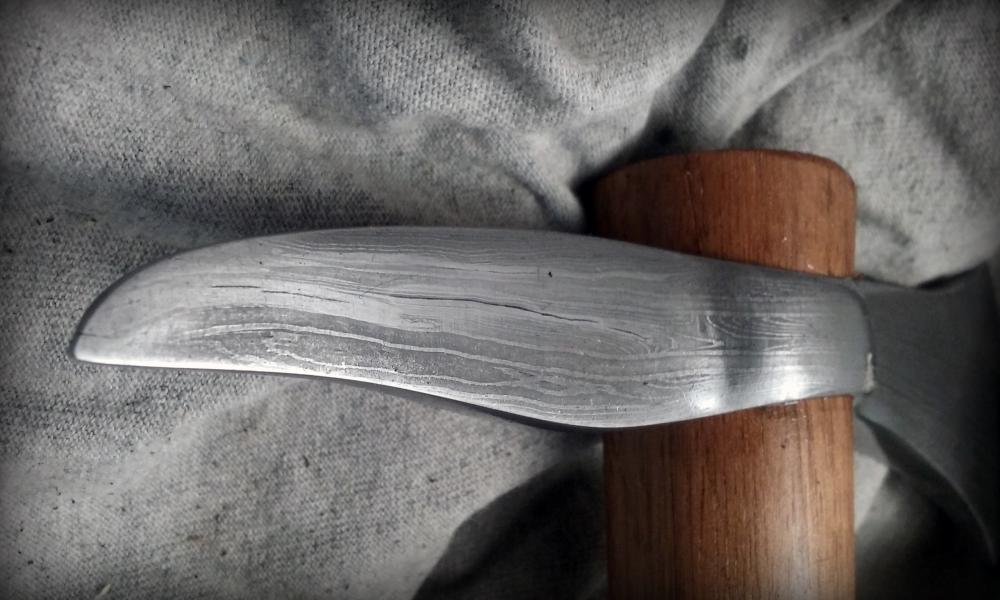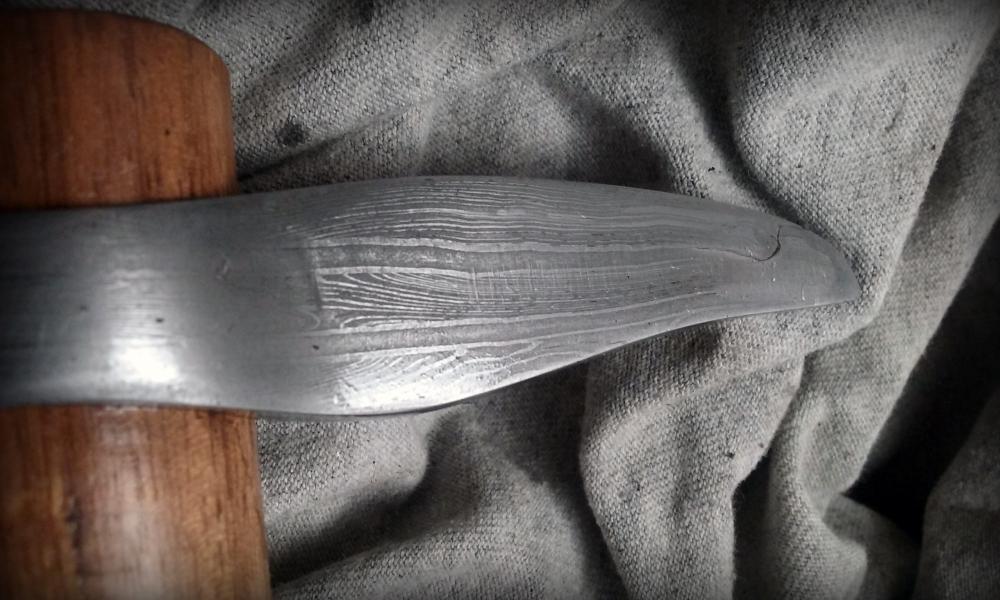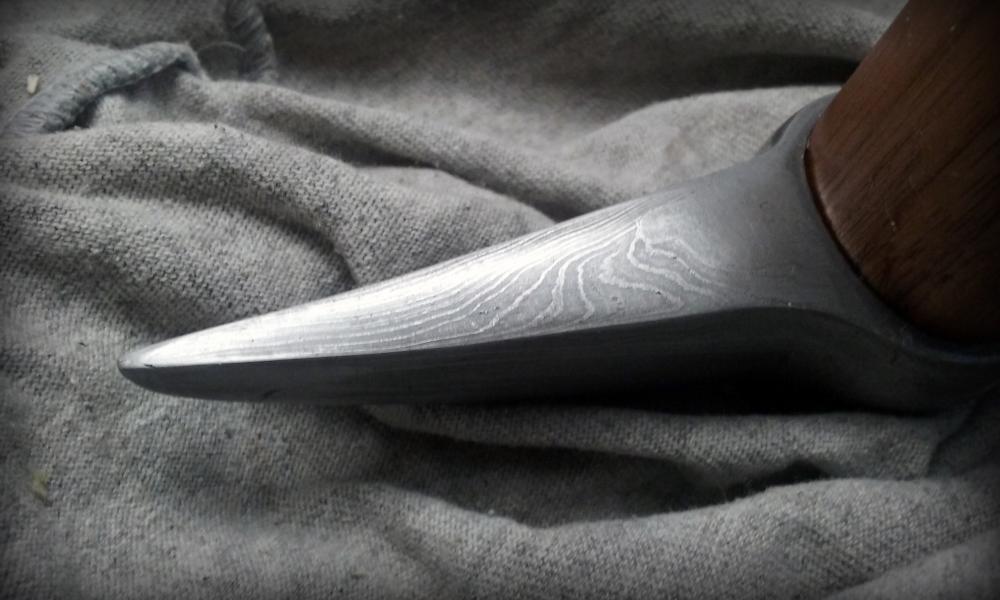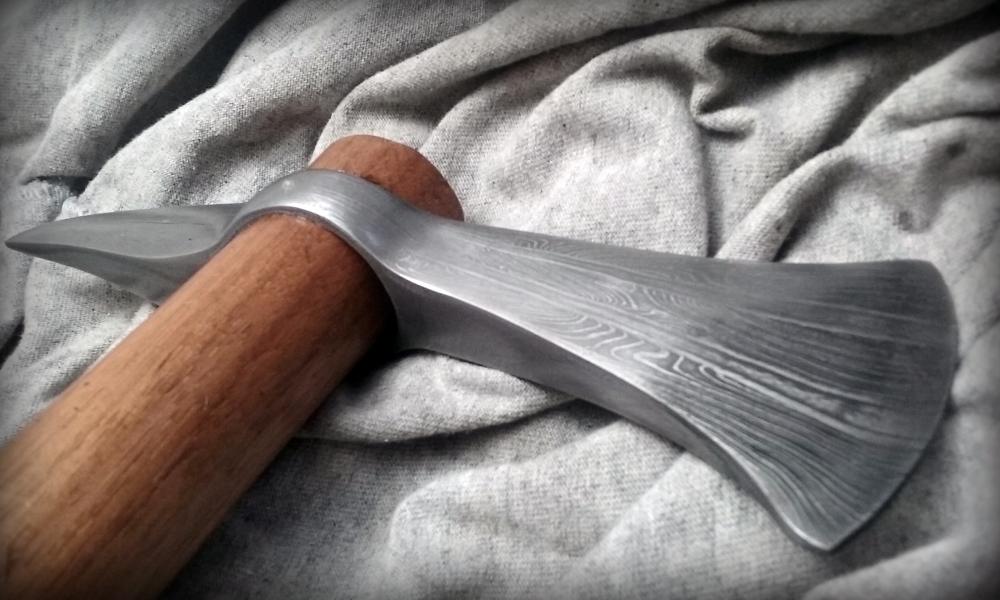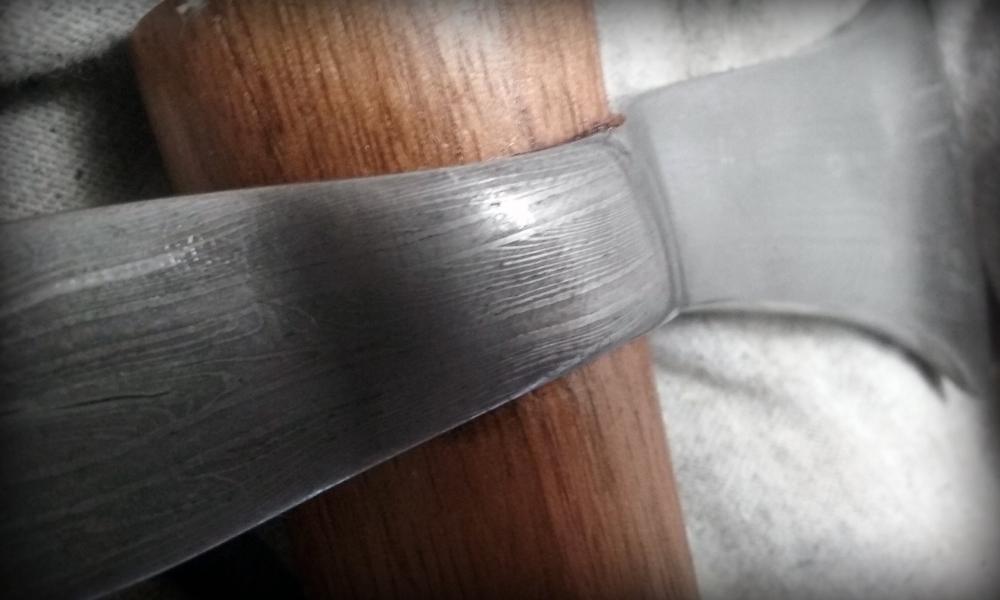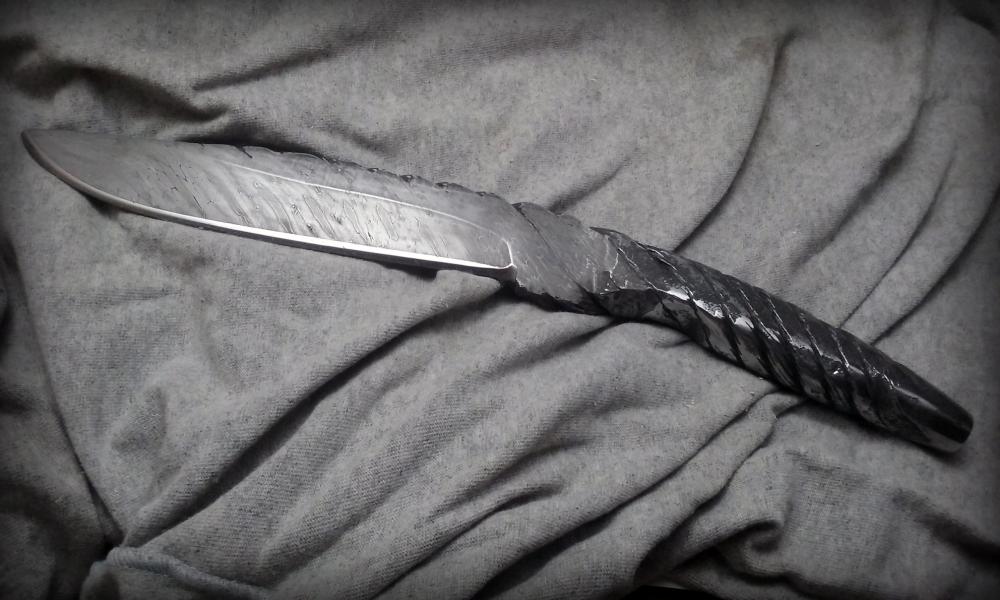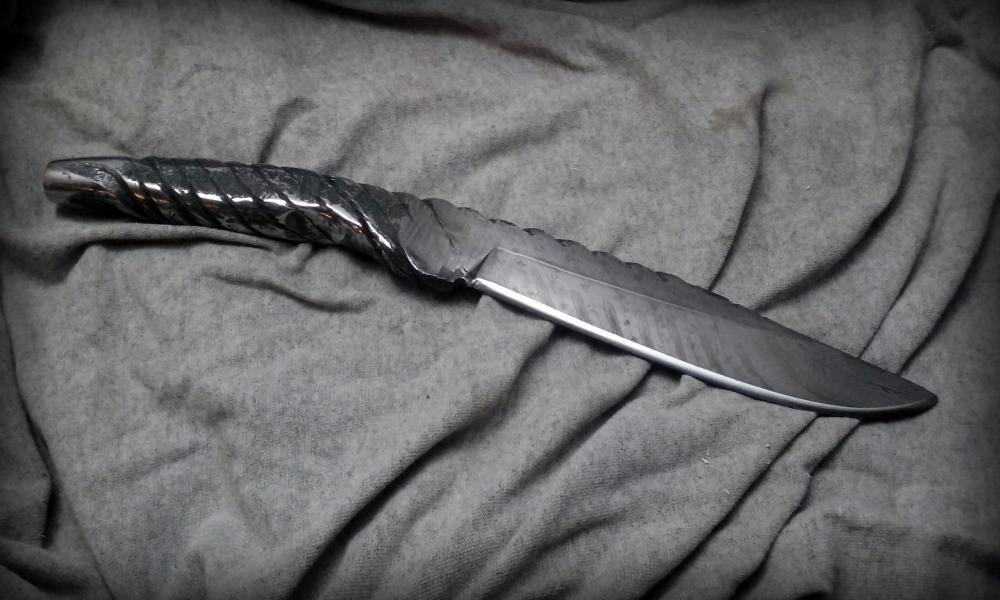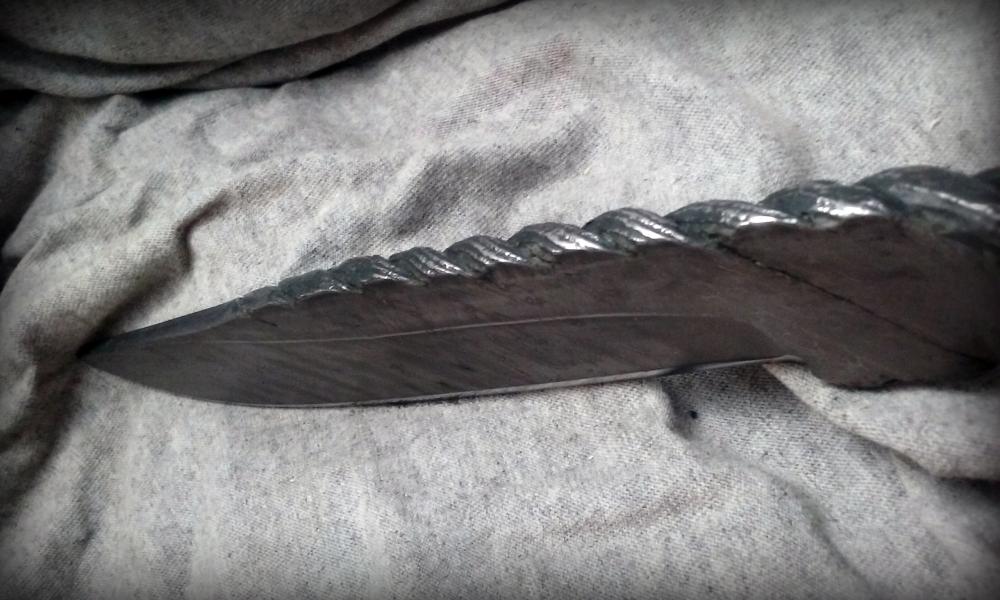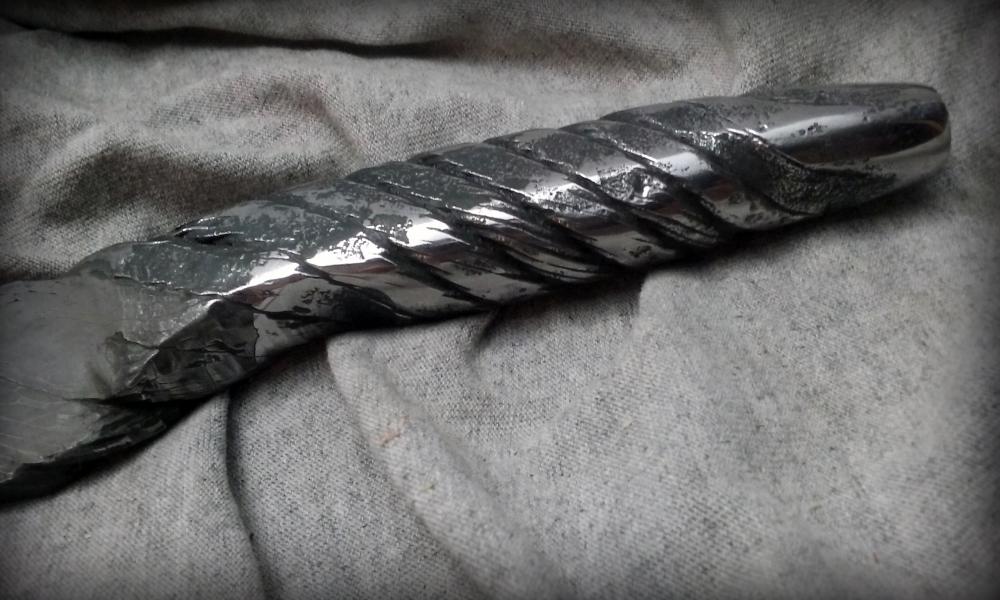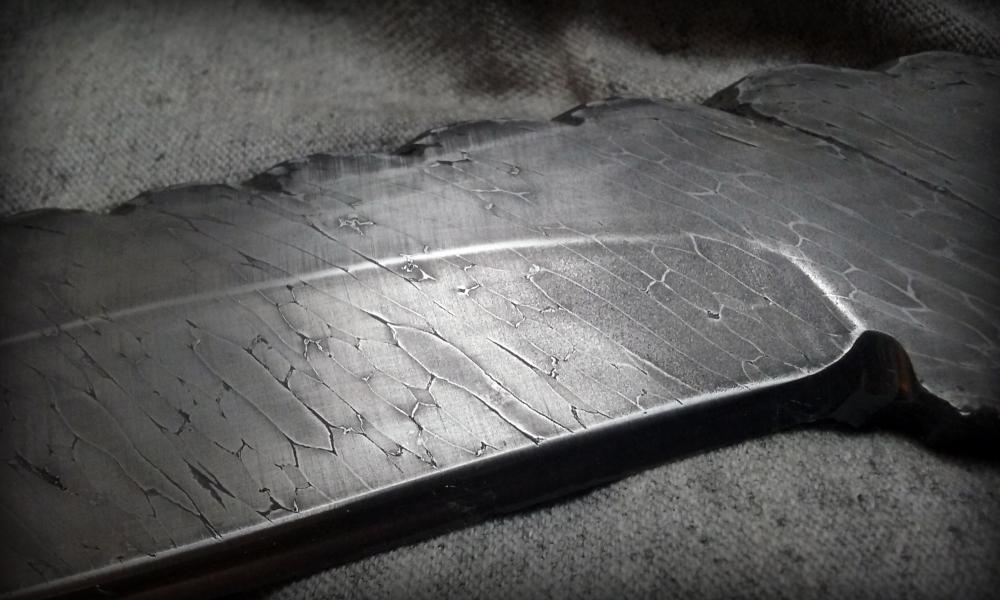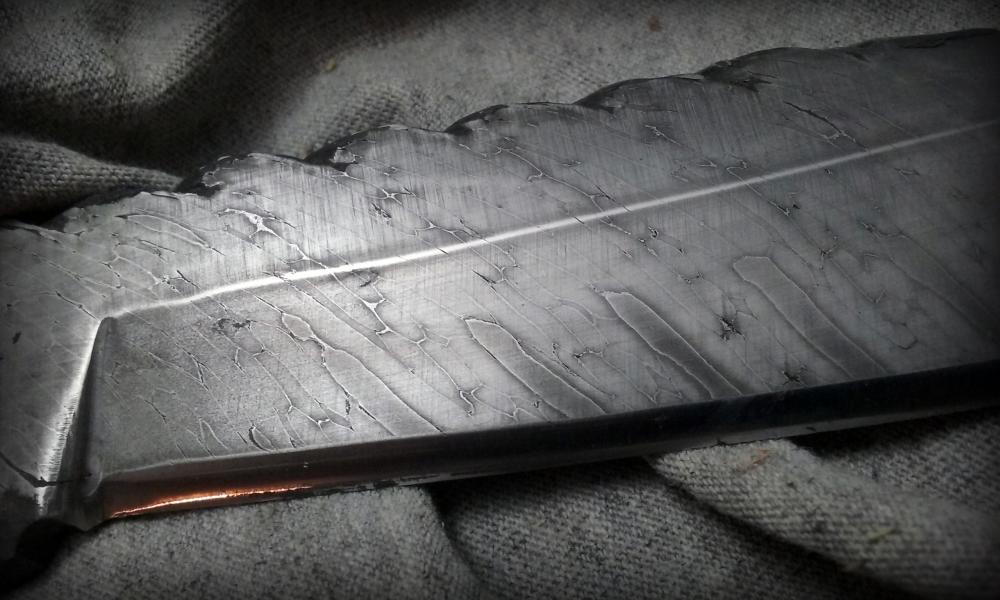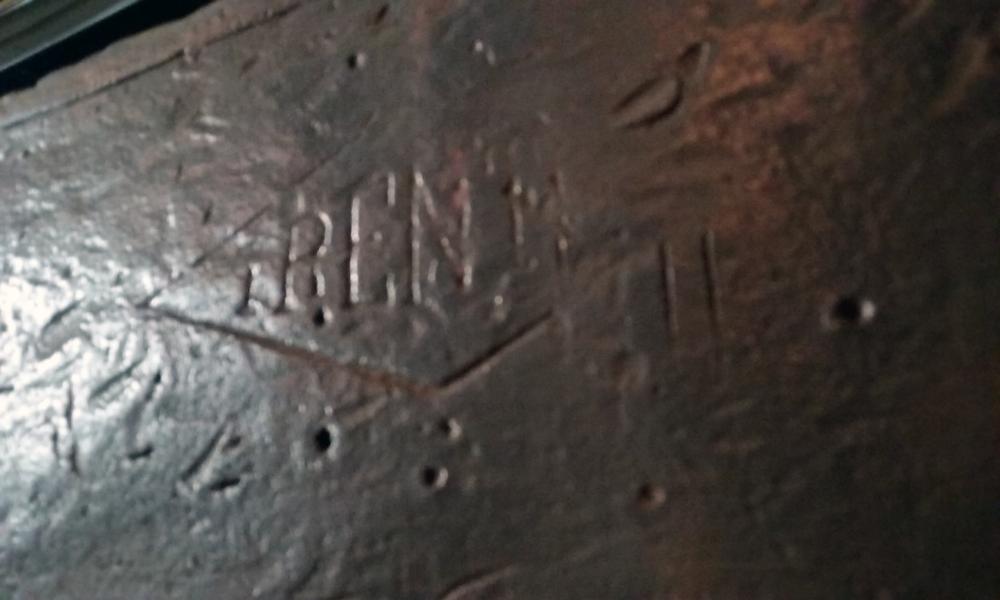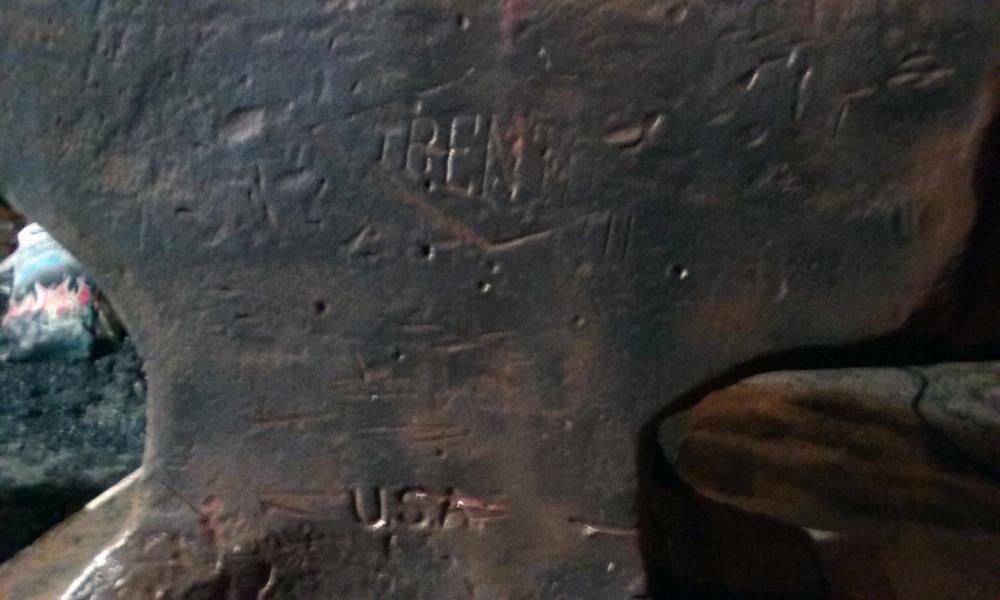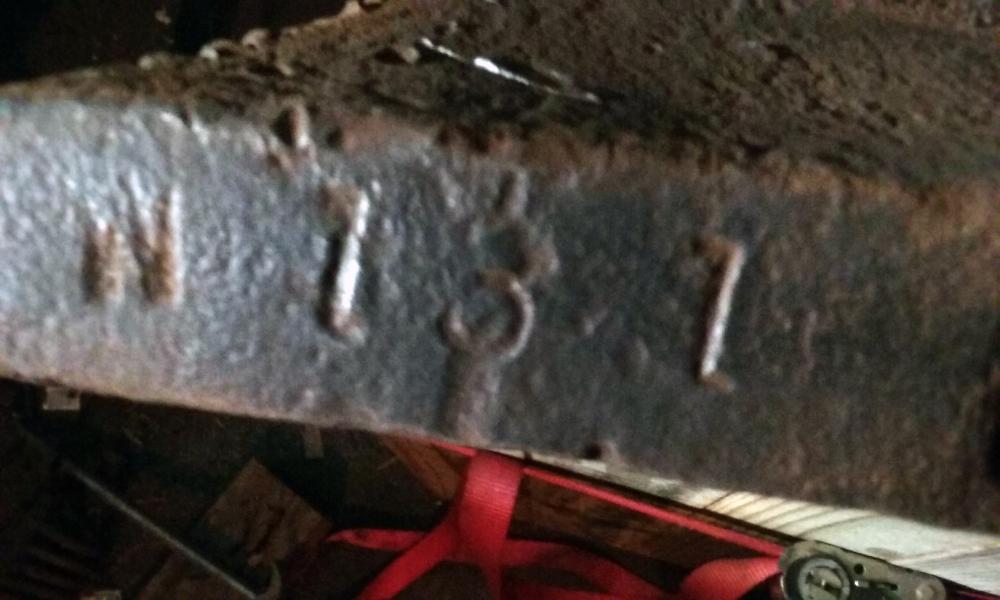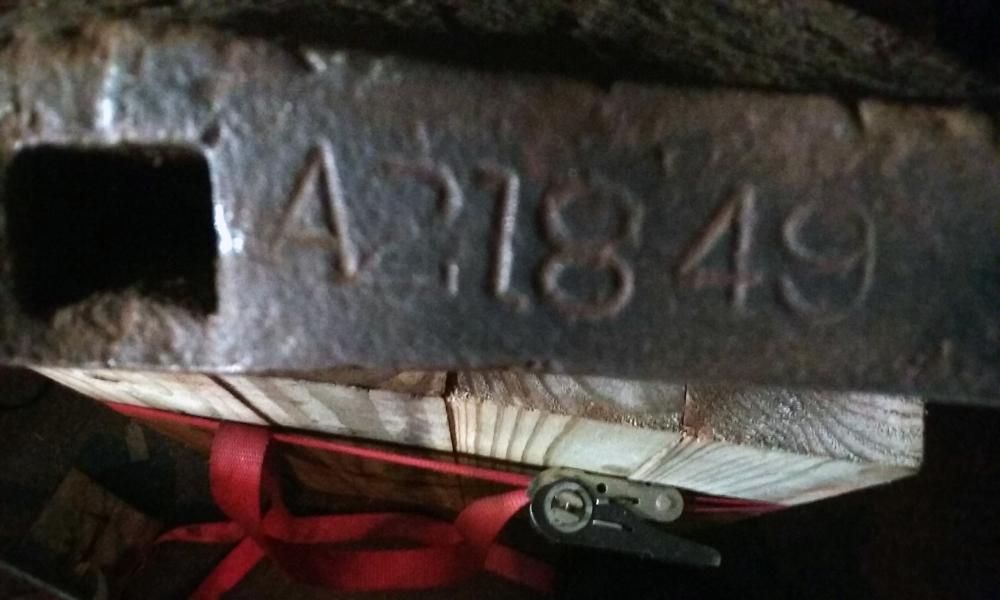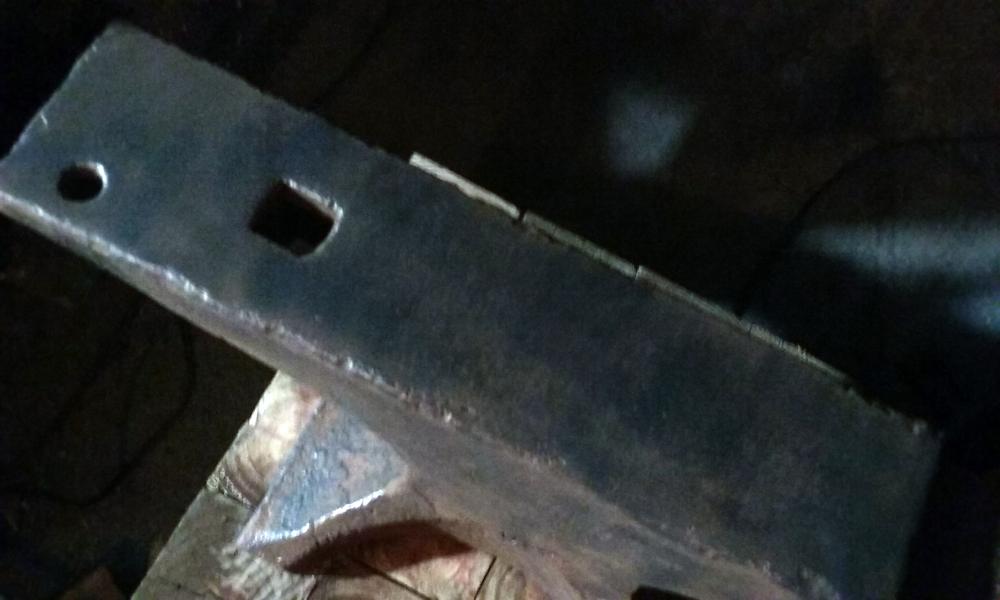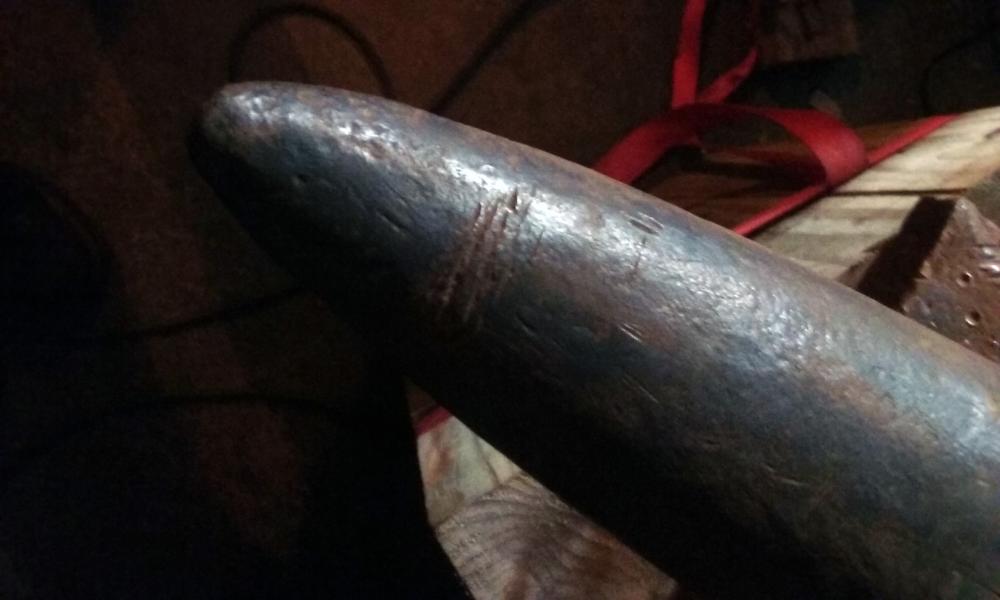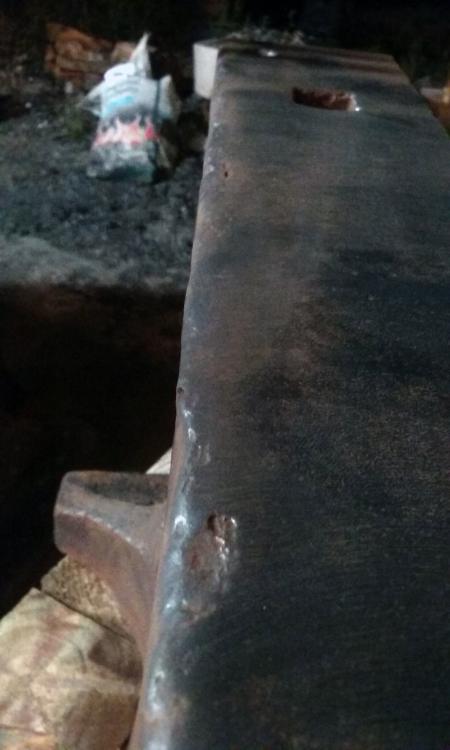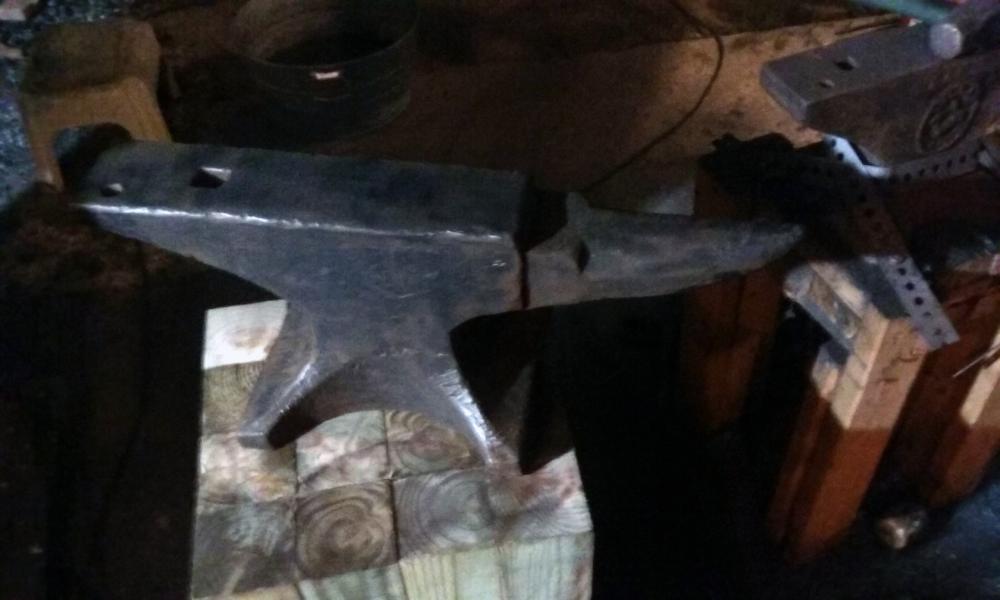-
Posts
203 -
Joined
-
Last visited
Content Type
Profiles
Forums
Articles
Gallery
Downloads
Events
Everything posted by HEAP of JEEP
-
I've put it off as long as I can, but I finally had to accept an order for a chef knife. Had some fun with the pattern. My take on the Turkish Twist. 1080 and 15n20 curly maple for the handle.
-
I haven't been around in a while, but wanted to let everyone know that another iforgeiron member made it to the show. I'll be on tonight's episode (Season 6 Episode 28), Blackbeard's Cutlass
-
I've always been intimidated by feather patterns, but decided to give it a try. I love how it came it, and will absolutely be trying some other variations in the coming months. Blade Length: 6" Handle: 4.5" 1080 and 15n20, bone bolsters, walnut scales, black leather spacers This took me about 2 and a half weeks from start to finish, which is the most time I've spent on a single knife in quite a while... I wish I had made the handle just a bit bigger... my wife says it fits her hand perfectly, so I guess that's not terrible, but even for a kitchen knife, I'd like it to be just a bit bigger for my hand. The bone also came out looking kind of gray and dirty. Other bone I've used has come out white and clean looking, but I guess I got a bad cow or something with this batch.
-

A few of my recent attempts (Photo Heavy)
HEAP of JEEP replied to HEAP of JEEP's topic in Knife Making
Appreciate that. Watched your video from afterwards. Answered a lot of the behind the scenes questions I had. -

A few of my recent attempts (Photo Heavy)
HEAP of JEEP replied to HEAP of JEEP's topic in Knife Making
Thanks, Das! Thanks, Theo! Means a lot from someone who's blades I really admire! There's been a few forums members that I've seen make it to the show, so if that ever happens, I would grill them all relentlessly!!!!!! LOL. -
Hey everyone, Been a while since I've posted much. Been swamped at work, but have had enough time to complete a few recent projects. First is a Wakizashi inspired blade. 16.5" blade. 22" overall. Made from 5160 with Walnut Handle scales. Next is a small 5" twisted Damascus hunter. 1080 and 15n20 with quarter sawn oak handle scales. And last is an 8.5" Bowie with a Walnut and Mahogany handle with leather and brass spacers. Made from 5160 with a mild steel guard.
-
Cool, I will send you a private message
-
This weekend I was given a forge blower. A Canedy Otto Royal Western Chief H Model. Its the main body and the fan blade, but it is missing the entire gear box assembly along with all the gears. It was free, so no loss on my end, but wondering if anyone has an extra gear box up for sale. I'd love to get this fixed up so I can take it to demos where I don't have access to power. I can post a picture or two if it would help.
-
Had some "Firsts" with this one, so thought I would throw pictures up. First time with a layer count in the 400's (Grand total, 483) First time trying the vine jimping. Not perfect, but happy for a first attempt. First time making my own micarta... in fact, I've never even purchased micarta, so first time using it, period. A rather messy process, but it was remarkably easy and enjoyable to use and shape, and the end result was a pretty cool handle.
-

Not a failure but a lesson
HEAP of JEEP replied to Elemental Metal Creations's topic in Knife Making
I'd say a fair amount, but impossible to give you a number. When I do get a warp, I don't measure, but have more of a naturally occurring scale... like, "Eh, that's not horrible"... all the way up to "Holy ______... how the ______ did that happen?!?!?!" I've been using this process for the last 18 months or so, and its taken care of the handful of blades that I've had warp in that time... but I don't recall any that were all that bad, so hard for me to say. -

Not a failure but a lesson
HEAP of JEEP replied to Elemental Metal Creations's topic in Knife Making
I've had some great success with clamping it to a straight edge, like apiece of angle iron, while tempering. I don't get warps often (Proper normalizing before heat treat will help a lot) but when they do show up, they have always straightened out after two 1-hour tempering cycles. Just make sure the straight edge you use is truly straight, and make sure your clamps don't have any plastic pieces that will melt in the oven. -

Damascus with bone handle (First time using bone)(picture heavy)
HEAP of JEEP replied to HEAP of JEEP's topic in Knife Making
Thanks, Theo. I've watched a lot of your builds and have been in awe, so that really means a lot to me. Thanks, Das. I've heard that working it with hand tools with help prevent the nasty smell, so there might be more bone handles in my future. -
Been a few months since I've really had time to forge up anything new, so when the time appeared, I of course had to go back to my favorite things to make. 1080 and 15n20, 60 layers, twisted, then stretched out and san mai'd it around a 1080 core. So final layer count would be 121. I used some old cow bone from my dogs chew toys, and some walnut as spacers. Its my first time ever using bone and it was so nasty, messy, and smelly, I don't know if I'll ever do it again. My garage still stinks to high heaven.
-
I took a commission for a Damascus knife from a relative of my ex-wife. The goal was to make it as cool as I could on her very limited budget. Her hubby... the gift receiver, is a big Jeep guy, so the only constraint I had was incorporate some Jeep leaf spring in to the billet. Most is 1080 and 15n20, with a few piece of leaf spring thrown in to make it "Jeep". 168 layers, walnut handle, brass pins. About as basic as I could make it, but I think he'll still get a charge out of it on Christmas morning.
-
Yeah, I like that one. Unfortunately, when I want railroad spikes, I have to go the big corporate owned one next door to that guy. They must have a contract with the RR or something, because that is the only one where they drop off the old spikes and rail sections after they do repairs around here. That place weighs every little thing you take out of there, and charge anywhere from fifty cents a pound on up... The problem is they get more of the stuff I like to use for my trinkets... the old files, spikes, and such. Treasure hunting at the little guys place is a lot more fun though because I know I never have to have much cash with me. The one nice thing about the big one, is they do get in a lot of bigger cut offs of mild steel and sell those cheaper than the steel yard I sometimes use for actual stock. Guess its all a balancing act to make it the most cost effective.
-
Thankfully, the scrap yard that I frequent the most is owned by a guy who lets me walk out with an arm load of stuff and only asks for a couple of bucks each time I go. I think the most he's ever asked for was $5 when I walked out of there with a couple of leaf spring packs, a couple of coil springs, and a hunk of cable. So, thankfully, if I break it down, I probably paid fifty cents for the thing and I've still got about three feet left, so plenty more to play around with.
-
Trying to whip out a few small things for a Christmas craft show I have this weekend. When I was at the scrap yard a few days ago, I grabbed, what I thought was, a 5/8 copper rod, thinking I'd find some uses for it. I thought a copper spoon might be kind of cool, so figured I try one. I was worried about getting the copper to hot, so I kept a very close eye on it, but no matter what I did, it just wasn't moving very easily. I eventually got the spoon shaped, but wasn't happy with a coupe of spots around the bowl, so decided Id just touch them with the angle grinder and level them out real quick, and to my surprise, I got sparks.... a quick test with the magnet, and it turns out it was a steel rod with copper plating. Oh well. I was basically done with the spoon so decided to just polish it up to see what I got, and I was surprised at how much copper remained. Figured I'd label it "decorative only" since I can't be certain what alloys might be involved, but I think it will stand out nicely on the table.
-

What do you do when.....
HEAP of JEEP replied to SkoobyNewb's topic in Blacksmithing, General Discussion
Stand in front of the forge, wondering why its taking so long to heat up... or, try to whip out something on the honey-do list, like sweep the garage, and then wonder why my steel burnt up while my back was turned. Of course, I'm impatient AND dumb... a bad combination for a hobby blacksmith. -

Favorite item to forge? Axe/hawks for me.
HEAP of JEEP replied to Dcav's topic in Blacksmithing, General Discussion
My favorite thing to forge is a knife where I forge in the bevels. I don't know why, but enjoy trying to figure out how much reverse curve I need to put in to compensate for the curve from forging in the bevels. A close second is bottle openers... again, no idea why. We have a lot of small breweries in my area, so I do sell a few of them, but for some reason, I just find them very relaxing and fun to forge. -
When I ran out of old files to make herb choppers from, I started making them out of some old leaf spring I had lying around, but then happened upon some blades off of some type of old farm equipment. No idea what type of steel it is, but I never argue about taking usable scrap when the price is right (Free). First test was to see if it had enough carbon to harden up at all, and it sure did. So, after playing around with it, I decided I was getting a good enough grain and hardness to use it for my herb choppers, since it was a much more workable size to begin with. I've really had some very nice success with the choppers that came from them, so was just playing around and decided to throw together a quick knife to throw out on my table at an upcoming craft show this weekend. Nothing fancy, but should be an easy sell at the show. I used some reclaimed walnut for the scales, and brass pins. I kept debating with myself on whether I should leave some of the forge marks in, and once it was "done", I decided I made a mistake in taking them all out. Some of the pitting that was on the steel when I started, is still evident near the top of the spine. If I had left some of the forge marks in, that pitting would look like it belongs, rather than standing out like a sore thumb. I only edge quench my herb choppers, and with this particular steel, I've been winding up with some vary obvious quench lines, that are very light and wispy, like a good hamon should be. I haven't worked with a decent steel for hamons in a while, so thought I'd have some fun and see what kind of results I could get when I was actually trying to get one. I clayed the blade before heat treat, but I was out of the stuff I usually use, so tried some refractory cement that I use to line my forge. I mixed it with a little clay. It dried well, and stayed in place during the heating, but blew right off in the quench... so much so, that there was nothing left to clean up on the blade. I haven't done enough hamons to know the ins and outs, but figure the clay blowing off wouldn't allow for the proper cooling, so wasn't expecting anything after that. To my surprise, I did wind up with a very slight hamon, but nothing as pronounced as I was getting by accident, and so subtle that there was no way I could get a decent picture with my limited camera set up. I might have to play around with it some more, but all in all, for a quick little project, it was a lot of fun to make. Always learning something... even on the quick fun projects.
-

First hawk... Damascus, of course...
HEAP of JEEP replied to HEAP of JEEP's topic in Axes, Hatchets, Hawks, Choppers, etc
Let's see... I haven't done the math yet. There's three separate billets, each with 64 layers then twisted. Then I flattened those and put them together with a layer of 1080 and two layers of 15n20 between each billet. So that would be 198 total. -
Here's my first attempt at a tomahawk. Not 100% happy with it, but for a first ever try, I can't complain to much. Just disappointed in a couple of tiny flaws in my Damascus that became apparent after the etch, and then I wound up with a tiny gap on the bottom of the eye where it meets the handle. Overall, though, I'm pretty dang happy with it. Made from 1080 and 15n20. Edge quenched, so hopefully the eye stayed soft enough, but then after the oven temper, I also took the torch to the eye and surrounding area and tempered it even further. The handle is walnut. Because I do everything by hand, this was a very time consuming project. It took up a full two weeks of my life... granted that's limited forge time after work and full days on the weekends, but I probably have over 50 hours in to it. Hopefully it shows... I love the end result, but I don't know how soon I'll be trying this again. Still have to put the final edge on it.
-
The farmers market that I go to bills itself as a farmers/artisan market. Most weekends its split about 50/50 between farmers and crafters. I've had some really good weekends, and some really bad ones. One week, right before Labor Day, I sold absolutely nothing. The weekends on either side of that one, I sold a ton, so once its averaged out, I guess I still did ok. My schedule at work changed this week, which opened up my afternoons enough for me to try a weekday evening farmers/artisan market a lot closer to my house. There's only a couple of weeks left for that one this year, but it should give me an idea of if its worth it to do this one starting next spring. Compared to the regular craft shows, the sales are pretty small, but its enough to keep me hopping at the forge since real life limits my time there to a couple of hours a day, at most. And, some weekends I'm walking out of there with a few hundred bucks extra for the family budget, so seems like a no brainer for me to keep going. As far as what has sold for me... it varies week to week. A few weeks ago, I had several knives out and every single one of them sold, and its been a struggle to get anymore done, but the couple I have completed since then, just sit there... Two weeks ago I sold almost every wall hook I had taken... but some weeks, they just sit there. Even after doing this for most of the summer, I still can't get a good gauge on what sells the best. The camping tripod I set up in front of my tent draws a ton of attention, but hasn't sold. Bottle openers sell pretty well... especially the themed ones... horse heads, wizards, dice... as long as I can keep them in the $20 range, I seem to sell those pretty regularly. We have a ton of breweries in the area and the craft beer people enjoy them...but we also have a ton of wineries and I've only sold one cork screw over the same time. I use diluted ferric chloride for etching. For this one, I gave it three 20 minute etching cycles with a light sanding with 1200 between each cycle. I was going to give it one more cycle, but it was getting late, I was tired, and I just needed to get it done to get on the table the next morning.
-
I've been working hard, trying to keep my tables full at a weekly farmers market/artisan show, and have been finding it very difficult to produce knives in my limited forge time. So, with no knives on my tables, I needed to bust one out quick. With no time it forge up a damascus billet, I went with another cable knife. I tried a new technique of leaving the cable running along the spine. It made forging it a lot more difficult since I was only welding it from the sides, but I ultimately got a solid blade out of it. There's a couple of spot near the transition to the handle that I was concerned about, but after clamping it in the vice and torquing on it with some real force, they didn't show any signs of movement, so I'm thinking they are mainly just on the surface and everything underneath is solid. This didn't sell over the weekend, but It drew enough attention to get me three knife orders... now to find the time to make the knives and still keep the tables full. What have I gotten myself in to?
-

Old Trenton has a new home
HEAP of JEEP replied to HEAP of JEEP's topic in Anvils, Swage Blocks, and Mandrels
Picked it up tonight and started on the cleanup a little bit. Took some pictures after the first go around with the wire brush. Its actually cleaning up really nicely. There's a couple of spots on the front of the face on each side where the edges might need to be filled some day, but plenty of usable edge on both sides, once I give it a little attention with a flap wheel. The horn needs just a little bit more attention than the edges. The end is blunted just a little to much, and the very end looks just a tad higher than the rest of it... maybe it was dropped at some point, and that's what caused both issues? The face is pretty dang near perfectly flat, so I'm not even going to worry about flattening that out. Rings like a church bell, and with a ball bearing, just sitting on the 4x4s I have it resting on now, I'm getting about 80% rebound... or maybe just a hair more. I'm dropping the ball bearing from 10" and its rebounding up to 8-8.5. My old Vulcan only has 55-60%, so wondering if I'll notice much of a difference. I'm curious to know what some of the Trenton experts think the weight is. When I look at the stamp from one angle, I clearly see 181... but from a different angle, I clearly see 131. All I know is I guessed, from lifting it, that it was in the 150 range, so I either guessed a little low, or a little high. As for marking on the side, Only about half to two thirds of the Trenton label is visible. I might try the baby powder trick, if that isn't enough of the label to learn from. It is clearly stamped U.S.A., and that's it. I know some had stamps saying Wrought, or something like that, but I'm not finding anything else. So, either it got worn away, or it never had it.

